

How to Write a Good Conclusion Paragraph (+30 Examples)
A good conclusion paragraph is the lasting impression you want to leave with your reader.
Here is a quick summary of how to write a good conclusion paragraph:
Write a good conclusion paragraph by summarizing key points, restating your thesis, and providing a final thought or call to action. Ensure it wraps up your main ideas, reinforces your argument, and leaves the reader with something to ponder.
This ultimate guide will walk you through the steps to craft an effective conclusion, along with 30 examples to inspire you.
5 Steps for Writing a Good Conclusion Paragraph

Table of Contents
There are five main steps to writing a good conclusion.
Let’s go through each step
1. Understand the Purpose
The conclusion is your final opportunity to leave an impact.
It should tie together your main ideas, reinforce your message, and give the reader a sense of closure.
Wrap Up Your Main Ideas
The conclusion should succinctly wrap up the main points of your writing. Think of it as a summary that captures the essence of your arguments without going into detailed explanations.
This helps reinforce what you have discussed and ensures that the reader remembers the core message.
Reinforce Your Thesis
Your thesis statement is the foundation of your writing.
In the conclusion, restate it in a new way to reinforce your central argument. This reminds the reader of the purpose of your writing and underscores its significance.
Give a Sense of Closure
A good conclusion gives a sense of closure to the reader. It signals that the discussion has come to an end and that all points have been addressed. This helps the reader feel that the piece is complete and that their time was well-spent.
Leave the Reader with Something to Think About
The best conclusions go beyond merely summarizing the content.
They leave the reader with a final thought or reflection that stays with them. This could be a call to action, a prediction about the future, or a thought-provoking question that encourages further reflection on the topic.
2. Summarize Key Points
Briefly summarize the key points discussed in the body of your text.
Avoid introducing new information. This helps the reader recall the main ideas.
Brief Summary
The summary should be concise and to the point. Highlight the main ideas discussed in your writing without going into detailed explanations. This helps refresh the reader’s memory of your key points.
Avoid New Information
Introducing new information in the conclusion can confuse the reader. The conclusion is not the place to present new arguments or data. Stick to summarizing what has already been discussed.
Recall Main Ideas
Summarizing the key points helps the reader recall the main ideas of your writing. This reinforces the message and ensures that the reader takes away the most important information from your piece.
“In conclusion, adopting sustainable practices, reducing waste, and promoting renewable energy are essential steps towards a greener future.”
3. Restate the Thesis
Restate your thesis in a new way. This reinforces your argument without sounding repetitive.
Restate, Don’t Repeat
Restating the thesis means expressing it in a new way.
Avoid repeating it verbatim.
Instead, rephrase it to reinforce your argument and show that you have successfully argued your point throughout the piece.
Reinforce the Argument
Restating the thesis helps reinforce your central argument. It reminds the reader of the purpose of your writing and underscores its significance.
Provide Closure Restating the thesis in the conclusion gives a sense of closure.
It signals that the discussion has come full circle and that you have addressed your initial argument.
“By implementing these strategies, we can significantly reduce our carbon footprint and protect our planet for future generations.”
4. Provide a Final Thought
Offer a final thought or reflection to leave a lasting impression. This could be a call to action, a prediction, or a thought-provoking question.
Final Thought or Reflection
A final thought or reflection can leave a lasting impression on the reader.
It shows that you are not just summarizing your points but also offering a deeper insight or perspective.
Call to Action
A call to action encourages the reader to take the next step.
It motivates them to act based on the information or arguments presented in your writing.
Prediction or Question
A prediction about the future or a thought-provoking question can engage the reader and encourage further reflection. This leaves the reader with something to think about even after they have finished reading.
“As we move forward, it’s crucial to remember that every small effort counts. Together, we can make a difference.”
5. Use a Call to Action (if applicable)
If your piece is meant to persuade or encourage action, include a call to action. This motivates the reader to take the next step.
Motivate the Reader
A call to action motivates the reader to take the next step.
It encourages them to act based on the information or arguments presented in your writing.
Encourage Action
Including a call to action is especially important in persuasive writing. It encourages the reader to act on the information provided and make a change or take a specific action.
Provide Clear Steps
A good call to action provides clear steps for the reader to follow.
It should be specific and actionable, guiding the reader on what to do next.
“Join us in making a positive change. Start today by reducing your plastic use and spreading awareness about environmental conservation.”
Check out this video about how to write a good conclusion:
How to Write a Good Conclusion for an Essay
Writing a good conclusion for an essay involves summarizing your main points, restating your thesis, and providing a final thought or reflection.
Here’s how:
- Summarize Main Points : Briefly recap the key points discussed in the body of your essay.
- Restate Thesis : Paraphrase your thesis statement to reinforce your argument.
- Final Thought : Offer a final insight, question, or call to action to leave a lasting impression.
This approach ensures your essay feels complete and leaves the reader with a clear understanding of your argument.
How to Write a Good Conclusion for an Argumentative Essay
A strong conclusion for an argumentative essay should not only summarize the main points and restate the thesis but also emphasize the importance of your argument.
Follow these steps:
- Summarize Arguments : Briefly outline the main arguments presented.
- Restate Thesis : Rephrase your thesis to highlight its significance.
- Address Counterarguments : Acknowledge opposing viewpoints and reinforce why your argument is stronger.
- Call to Action : Encourage the reader to take action or reconsider their position.
How to Write a Good Conclusion for a Research Paper
Crafting a good conclusion for a research paper involves summarizing your findings, discussing their implications, and suggesting future research.
Here’s a guide:
- Summarize Findings : Recap the key results of your research.
- Discuss Implications : Explain the significance of your findings and how they contribute to the field.
- Restate Research Question : Reiterate the research question and how your findings address it.
- Suggest Future Research : Propose areas for further investigation.
This format provides a comprehensive and thoughtful conclusion that underscores the importance of your research and its potential impact.
30 Examples of Good Conclusion Paragraphs
Let’s explore some good examples of good conclusions.
Example 1: Environmental Essay
“In conclusion, the preservation of our natural resources is not just a necessity but a responsibility we owe to future generations. By taking small steps today, we can ensure a healthier planet tomorrow.”
Example 2: Technology Article
“As we embrace the advancements in technology, it is vital to remain vigilant about privacy and security. Staying informed and proactive can help us navigate the digital landscape safely.”
Example 3: Health and Wellness Blog
“Ultimately, achieving a balanced lifestyle requires dedication and mindfulness. By prioritizing our well-being, we can lead healthier and more fulfilling lives.”
Example 4: Business Report
“In summary, the market analysis indicates a positive trend for our product. With strategic planning and execution, we can capitalize on these opportunities and drive growth.”
Example 5: Education Essay
“In the end, fostering a love for learning in students is the key to their success. By creating engaging and supportive educational environments, we can inspire the next generation of leaders.”
Example 6: Travel Blog
“To conclude, exploring new destinations enriches our lives and broadens our perspectives. Embrace the adventure and discover the beauty of our world.”
Example 7: Personal Development Article
“In the final analysis, personal growth is a lifelong journey. Embrace challenges, learn from experiences, and continue striving to become the best version of yourself.”
Example 8: Marketing Case Study
“In closing, the data clearly shows that targeted marketing strategies significantly improve customer engagement and sales. By refining our approach, we can achieve even greater success.”
Example 9: Historical Analysis
“In conclusion, the events of the past continue to shape our present and future. Understanding history is essential to making informed decisions and avoiding past mistakes.”
Example 10: Scientific Research Paper
“Ultimately, the findings of this study contribute to our understanding of the subject and open the door for further research. Continued exploration in this field is vital for advancing knowledge.”
Example 11: Political Commentary
“In the end, civic engagement is crucial for a functioning democracy. Stay informed, participate in discussions, and exercise your right to vote.”
Example 12: Fashion Blog
“To wrap up, fashion is a powerful form of self-expression. Embrace your unique style and let your wardrobe reflect your personality.”
Example 13: Food Blog
“In conclusion, cooking at home not only saves money but also allows you to experiment with flavors and ingredients. Start your culinary journey today and discover the joys of homemade meals.”
Example 14: Sports Article
“Ultimately, teamwork and perseverance are the foundations of success in sports. Keep pushing your limits and strive for excellence on and off the field.”
Example 15: Literature Analysis
“In summary, the themes explored in this novel resonate with readers and offer valuable insights into the human condition. Its timeless message continues to inspire and provoke thought.”
Example 16: Parenting Blog
“In the end, raising children requires patience, love, and commitment. Cherish the moments, and remember that every effort you make shapes their future.”
Example 17: Finance Article
“To conclude, financial planning is essential for securing your future. Start today by setting clear goals and creating a budget that aligns with your aspirations.”
Example 18: Career Advice Blog
“In conclusion, building a successful career takes time and dedication. Stay focused, seek opportunities for growth, and never stop learning.”
Example 19: Fitness Blog
“Ultimately, regular exercise and a balanced diet are key to maintaining a healthy lifestyle. Stay motivated, and remember that every step counts towards your fitness goals.”
Example 20: DIY Blog
“In summary, DIY projects are a rewarding way to personalize your space and learn new skills. Get creative and start your next project today.”
Example 21: Relationship Advice
“In the end, strong relationships are built on communication, trust, and mutual respect. Nurture your connections and strive for harmony in your interactions.”
Example 22: Pet Care Blog
“To wrap up, responsible pet ownership involves understanding your pet’s needs and providing them with a loving home. Invest in their well-being, and they’ll reward you with unconditional love.”
Example 23: Environmental Science Paper
“In conclusion, addressing climate change requires global cooperation and immediate action. Every effort counts, and together we can create a sustainable future.”
Example 24: Technology Review
“Ultimately, this gadget offers impressive features that enhance convenience and efficiency. Consider it for your next tech upgrade.”
Example 25: Psychology Article
“In summary, understanding human behavior is crucial for improving mental health and well-being. Continue exploring this fascinating field for more insights.”
Example 26: Gardening Blog
“In the end, gardening is a therapeutic and rewarding hobby that connects us with nature. Start your garden today and enjoy the benefits of fresh produce and beautiful blooms.”
Example 27: Home Improvement Article
“To conclude, home improvement projects can significantly enhance your living space and increase property value. Plan carefully and enjoy the transformation.”
Example 28: Social Media Marketing
“In conclusion, effective social media marketing requires consistency, creativity, and engagement. Develop a strategy that resonates with your audience and watch your brand grow.”
Example 29: Automotive Review
“Ultimately, this vehicle combines performance, style, and safety. Take it for a test drive and experience its capabilities firsthand.”
Example 30: Music Blog
“In summary, music has the power to evoke emotions and bring people together. Explore different genres and find the soundtrack to your life.”
Tips for Writing a Strong Conclusion
Here are some simple but good tips for writing a powerful conclusion:
- Keep it Concise – A good conclusion should be short and to the point. Avoid unnecessary details and focus on wrapping up your main ideas.
- Use Clear Language – Ensure your language is clear and easy to understand. Avoid jargon and complex sentences.
- Be Consistent – Maintain the same tone and style as the rest of your text. Consistency helps create a seamless reading experience.
- End on a Positive Note – Whenever possible, end with a positive or uplifting message. This leaves the reader with a good impression.
Common Mistakes to Avoid
There are some common mistakes that many writers make when crafting their conclusions.
- Introducing New Information – Don’t introduce new ideas or arguments in the conclusion. This can confuse the reader and dilute your main points.
- Being Vague – Avoid vague statements that don’t add value. Be specific and clear in your summary.
- Repetitiveness – Don’t repeat the same points over and over. Restate your thesis and key points in a new way.
- Ignoring the Thesis – Make sure to tie your conclusion back to your thesis. This reinforces your argument and gives a sense of closure.
Final Thoughts: How to Write a Good Conclusion Paragraph
Writing a good conclusion paragraph is essential for creating a cohesive and impactful piece of writing.
By summarizing key points, restating the thesis, providing a final thought, and using a call to action, you can craft a strong conclusion that leaves a lasting impression.
Use the 30 examples provided to inspire your own writing and ensure your conclusions are always effective and engaging.
Read This Next:
- How to Write an Introduction Paragraph [50+ Examples]
- How to Write a Paragraph [Ultimate Guide + Examples]
- Types of Evidence in Writing [Ultimate Guide + Examples]
- Narrative Writing Graphic Organizer [Guide + Free Templates]
- How to Write a Hook (40 Good Examples)
So much is at stake in writing a conclusion. This is, after all, your last chance to persuade your readers to your point of view, to impress yourself upon them as a writer and thinker. And the impression you create in your conclusion will shape the impression that stays with your readers after they've finished the essay.
The end of an essay should therefore convey a sense of completeness and closure as well as a sense of the lingering possibilities of the topic, its larger meaning, its implications: the final paragraph should close the discussion without closing it off.
To establish a sense of closure, you might do one or more of the following:
- Conclude by linking the last paragraph to the first, perhaps by reiterating a word or phrase you used at the beginning.
- Conclude with a sentence composed mainly of one-syllable words. Simple language can help create an effect of understated drama.
- Conclude with a sentence that's compound or parallel in structure; such sentences can establish a sense of balance or order that may feel just right at the end of a complex discussion.
To close the discussion without closing it off, you might do one or more of the following:
- Conclude with a quotation from or reference to a primary or secondary source, one that amplifies your main point or puts it in a different perspective. A quotation from, say, the novel or poem you're writing about can add texture and specificity to your discussion; a critic or scholar can help confirm or complicate your final point. For example, you might conclude an essay on the idea of home in James Joyce's short story collection, Dubliners , with information about Joyce's own complex feelings towards Dublin, his home. Or you might end with a biographer's statement about Joyce's attitude toward Dublin, which could illuminate his characters' responses to the city. Just be cautious, especially about using secondary material: make sure that you get the last word.
- Conclude by setting your discussion into a different, perhaps larger, context. For example, you might end an essay on nineteenth-century muckraking journalism by linking it to a current news magazine program like 60 Minutes .
- Conclude by redefining one of the key terms of your argument. For example, an essay on Marx's treatment of the conflict between wage labor and capital might begin with Marx's claim that the "capitalist economy is . . . a gigantic enterprise of dehumanization "; the essay might end by suggesting that Marxist analysis is itself dehumanizing because it construes everything in economic -- rather than moral or ethical-- terms.
- Conclude by considering the implications of your argument (or analysis or discussion). What does your argument imply, or involve, or suggest? For example, an essay on the novel Ambiguous Adventure , by the Senegalese writer Cheikh Hamidou Kane, might open with the idea that the protagonist's development suggests Kane's belief in the need to integrate Western materialism and Sufi spirituality in modern Senegal. The conclusion might make the new but related point that the novel on the whole suggests that such an integration is (or isn't) possible.
Finally, some advice on how not to end an essay:
- Don't simply summarize your essay. A brief summary of your argument may be useful, especially if your essay is long--more than ten pages or so. But shorter essays tend not to require a restatement of your main ideas.
- Avoid phrases like "in conclusion," "to conclude," "in summary," and "to sum up." These phrases can be useful--even welcome--in oral presentations. But readers can see, by the tell-tale compression of the pages, when an essay is about to end. You'll irritate your audience if you belabor the obvious.
- Resist the urge to apologize. If you've immersed yourself in your subject, you now know a good deal more about it than you can possibly include in a five- or ten- or 20-page essay. As a result, by the time you've finished writing, you may be having some doubts about what you've produced. (And if you haven't immersed yourself in your subject, you may be feeling even more doubtful about your essay as you approach the conclusion.) Repress those doubts. Don't undercut your authority by saying things like, "this is just one approach to the subject; there may be other, better approaches. . ."
Copyright 1998, Pat Bellanca, for the Writing Center at Harvard University
Have a language expert improve your writing
Run a free plagiarism check in 10 minutes, generate accurate citations for free.
- Knowledge Base
- How to conclude an essay | Interactive example
How to Conclude an Essay | Interactive Example
Published on January 24, 2019 by Shona McCombes . Revised on July 23, 2023.
The conclusion is the final paragraph of your essay . A strong conclusion aims to:
- Tie together the essay’s main points
- Show why your argument matters
- Leave the reader with a strong impression
Your conclusion should give a sense of closure and completion to your argument, but also show what new questions or possibilities it has opened up.
This conclusion is taken from our annotated essay example , which discusses the history of the Braille system. Hover over each part to see why it’s effective.
Braille paved the way for dramatic cultural changes in the way blind people were treated and the opportunities available to them. Louis Braille’s innovation was to reimagine existing reading systems from a blind perspective, and the success of this invention required sighted teachers to adapt to their students’ reality instead of the other way around. In this sense, Braille helped drive broader social changes in the status of blindness. New accessibility tools provide practical advantages to those who need them, but they can also change the perspectives and attitudes of those who do not.
Instantly correct all language mistakes in your text
Upload your document to correct all your mistakes in minutes

Table of contents
Step 1: return to your thesis, step 2: review your main points, step 3: show why it matters, what shouldn’t go in the conclusion, more examples of essay conclusions, other interesting articles, frequently asked questions about writing an essay conclusion.
To begin your conclusion, signal that the essay is coming to an end by returning to your overall argument.
Don’t just repeat your thesis statement —instead, try to rephrase your argument in a way that shows how it has been developed since the introduction.
Prevent plagiarism. Run a free check.
Next, remind the reader of the main points that you used to support your argument.
Avoid simply summarizing each paragraph or repeating each point in order; try to bring your points together in a way that makes the connections between them clear. The conclusion is your final chance to show how all the paragraphs of your essay add up to a coherent whole.
To wrap up your conclusion, zoom out to a broader view of the topic and consider the implications of your argument. For example:
- Does it contribute a new understanding of your topic?
- Does it raise new questions for future study?
- Does it lead to practical suggestions or predictions?
- Can it be applied to different contexts?
- Can it be connected to a broader debate or theme?
Whatever your essay is about, the conclusion should aim to emphasize the significance of your argument, whether that’s within your academic subject or in the wider world.
Try to end with a strong, decisive sentence, leaving the reader with a lingering sense of interest in your topic.
The easiest way to improve your conclusion is to eliminate these common mistakes.
Don’t include new evidence
Any evidence or analysis that is essential to supporting your thesis statement should appear in the main body of the essay.
The conclusion might include minor pieces of new information—for example, a sentence or two discussing broader implications, or a quotation that nicely summarizes your central point. But it shouldn’t introduce any major new sources or ideas that need further explanation to understand.
Don’t use “concluding phrases”
Avoid using obvious stock phrases to tell the reader what you’re doing:
- “In conclusion…”
- “To sum up…”
These phrases aren’t forbidden, but they can make your writing sound weak. By returning to your main argument, it will quickly become clear that you are concluding the essay—you shouldn’t have to spell it out.
Don’t undermine your argument
Avoid using apologetic phrases that sound uncertain or confused:
- “This is just one approach among many.”
- “There are good arguments on both sides of this issue.”
- “There is no clear answer to this problem.”
Even if your essay has explored different points of view, your own position should be clear. There may be many possible approaches to the topic, but you want to leave the reader convinced that yours is the best one!
Receive feedback on language, structure, and formatting
Professional editors proofread and edit your paper by focusing on:
- Academic style
- Vague sentences
- Style consistency
See an example

- Argumentative
- Literary analysis
This conclusion is taken from an argumentative essay about the internet’s impact on education. It acknowledges the opposing arguments while taking a clear, decisive position.
The internet has had a major positive impact on the world of education; occasional pitfalls aside, its value is evident in numerous applications. The future of teaching lies in the possibilities the internet opens up for communication, research, and interactivity. As the popularity of distance learning shows, students value the flexibility and accessibility offered by digital education, and educators should fully embrace these advantages. The internet’s dangers, real and imaginary, have been documented exhaustively by skeptics, but the internet is here to stay; it is time to focus seriously on its potential for good.
This conclusion is taken from a short expository essay that explains the invention of the printing press and its effects on European society. It focuses on giving a clear, concise overview of what was covered in the essay.
The invention of the printing press was important not only in terms of its immediate cultural and economic effects, but also in terms of its major impact on politics and religion across Europe. In the century following the invention of the printing press, the relatively stationary intellectual atmosphere of the Middle Ages gave way to the social upheavals of the Reformation and the Renaissance. A single technological innovation had contributed to the total reshaping of the continent.
This conclusion is taken from a literary analysis essay about Mary Shelley’s Frankenstein . It summarizes what the essay’s analysis achieved and emphasizes its originality.
By tracing the depiction of Frankenstein through the novel’s three volumes, I have demonstrated how the narrative structure shifts our perception of the character. While the Frankenstein of the first volume is depicted as having innocent intentions, the second and third volumes—first in the creature’s accusatory voice, and then in his own voice—increasingly undermine him, causing him to appear alternately ridiculous and vindictive. Far from the one-dimensional villain he is often taken to be, the character of Frankenstein is compelling because of the dynamic narrative frame in which he is placed. In this frame, Frankenstein’s narrative self-presentation responds to the images of him we see from others’ perspectives. This conclusion sheds new light on the novel, foregrounding Shelley’s unique layering of narrative perspectives and its importance for the depiction of character.
If you want to know more about AI tools , college essays , or fallacies make sure to check out some of our other articles with explanations and examples or go directly to our tools!
- Ad hominem fallacy
- Post hoc fallacy
- Appeal to authority fallacy
- False cause fallacy
- Sunk cost fallacy
College essays
- Choosing Essay Topic
- Write a College Essay
- Write a Diversity Essay
- College Essay Format & Structure
- Comparing and Contrasting in an Essay
(AI) Tools
- Grammar Checker
- Paraphrasing Tool
- Text Summarizer
- AI Detector
- Plagiarism Checker
- Citation Generator
Your essay’s conclusion should contain:
- A rephrased version of your overall thesis
- A brief review of the key points you made in the main body
- An indication of why your argument matters
The conclusion may also reflect on the broader implications of your argument, showing how your ideas could applied to other contexts or debates.
For a stronger conclusion paragraph, avoid including:
- Important evidence or analysis that wasn’t mentioned in the main body
- Generic concluding phrases (e.g. “In conclusion…”)
- Weak statements that undermine your argument (e.g. “There are good points on both sides of this issue.”)
Your conclusion should leave the reader with a strong, decisive impression of your work.
The conclusion paragraph of an essay is usually shorter than the introduction . As a rule, it shouldn’t take up more than 10–15% of the text.
Cite this Scribbr article
If you want to cite this source, you can copy and paste the citation or click the “Cite this Scribbr article” button to automatically add the citation to our free Citation Generator.
McCombes, S. (2023, July 23). How to Conclude an Essay | Interactive Example. Scribbr. Retrieved June 11, 2024, from https://www.scribbr.com/academic-essay/conclusion/
Is this article helpful?
Shona McCombes
Other students also liked, how to write an essay introduction | 4 steps & examples, how to write a thesis statement | 4 steps & examples, example of a great essay | explanations, tips & tricks, "i thought ai proofreading was useless but..".
I've been using Scribbr for years now and I know it's a service that won't disappoint. It does a good job spotting mistakes”

Conclusions
What this handout is about.
This handout will explain the functions of conclusions, offer strategies for writing effective ones, help you evaluate conclusions you’ve drafted, and suggest approaches to avoid.
About conclusions
Introductions and conclusions can be difficult to write, but they’re worth investing time in. They can have a significant influence on a reader’s experience of your paper.
Just as your introduction acts as a bridge that transports your readers from their own lives into the “place” of your analysis, your conclusion can provide a bridge to help your readers make the transition back to their daily lives. Such a conclusion will help them see why all your analysis and information should matter to them after they put the paper down.
Your conclusion is your chance to have the last word on the subject. The conclusion allows you to have the final say on the issues you have raised in your paper, to synthesize your thoughts, to demonstrate the importance of your ideas, and to propel your reader to a new view of the subject. It is also your opportunity to make a good final impression and to end on a positive note.
Your conclusion can go beyond the confines of the assignment. The conclusion pushes beyond the boundaries of the prompt and allows you to consider broader issues, make new connections, and elaborate on the significance of your findings.
Your conclusion should make your readers glad they read your paper. Your conclusion gives your reader something to take away that will help them see things differently or appreciate your topic in personally relevant ways. It can suggest broader implications that will not only interest your reader, but also enrich your reader’s life in some way. It is your gift to the reader.
Strategies for writing an effective conclusion
One or more of the following strategies may help you write an effective conclusion:
- Play the “So What” Game. If you’re stuck and feel like your conclusion isn’t saying anything new or interesting, ask a friend to read it with you. Whenever you make a statement from your conclusion, ask the friend to say, “So what?” or “Why should anybody care?” Then ponder that question and answer it. Here’s how it might go: You: Basically, I’m just saying that education was important to Douglass. Friend: So what? You: Well, it was important because it was a key to him feeling like a free and equal citizen. Friend: Why should anybody care? You: That’s important because plantation owners tried to keep slaves from being educated so that they could maintain control. When Douglass obtained an education, he undermined that control personally. You can also use this strategy on your own, asking yourself “So What?” as you develop your ideas or your draft.
- Return to the theme or themes in the introduction. This strategy brings the reader full circle. For example, if you begin by describing a scenario, you can end with the same scenario as proof that your essay is helpful in creating a new understanding. You may also refer to the introductory paragraph by using key words or parallel concepts and images that you also used in the introduction.
- Synthesize, don’t summarize. Include a brief summary of the paper’s main points, but don’t simply repeat things that were in your paper. Instead, show your reader how the points you made and the support and examples you used fit together. Pull it all together.
- Include a provocative insight or quotation from the research or reading you did for your paper.
- Propose a course of action, a solution to an issue, or questions for further study. This can redirect your reader’s thought process and help them to apply your info and ideas to their own life or to see the broader implications.
- Point to broader implications. For example, if your paper examines the Greensboro sit-ins or another event in the Civil Rights Movement, you could point out its impact on the Civil Rights Movement as a whole. A paper about the style of writer Virginia Woolf could point to her influence on other writers or on later feminists.
Strategies to avoid
- Beginning with an unnecessary, overused phrase such as “in conclusion,” “in summary,” or “in closing.” Although these phrases can work in speeches, they come across as wooden and trite in writing.
- Stating the thesis for the very first time in the conclusion.
- Introducing a new idea or subtopic in your conclusion.
- Ending with a rephrased thesis statement without any substantive changes.
- Making sentimental, emotional appeals that are out of character with the rest of an analytical paper.
- Including evidence (quotations, statistics, etc.) that should be in the body of the paper.
Four kinds of ineffective conclusions
- The “That’s My Story and I’m Sticking to It” Conclusion. This conclusion just restates the thesis and is usually painfully short. It does not push the ideas forward. People write this kind of conclusion when they can’t think of anything else to say. Example: In conclusion, Frederick Douglass was, as we have seen, a pioneer in American education, proving that education was a major force for social change with regard to slavery.
- The “Sherlock Holmes” Conclusion. Sometimes writers will state the thesis for the very first time in the conclusion. You might be tempted to use this strategy if you don’t want to give everything away too early in your paper. You may think it would be more dramatic to keep the reader in the dark until the end and then “wow” them with your main idea, as in a Sherlock Holmes mystery. The reader, however, does not expect a mystery, but an analytical discussion of your topic in an academic style, with the main argument (thesis) stated up front. Example: (After a paper that lists numerous incidents from the book but never says what these incidents reveal about Douglass and his views on education): So, as the evidence above demonstrates, Douglass saw education as a way to undermine the slaveholders’ power and also an important step toward freedom.
- The “America the Beautiful”/”I Am Woman”/”We Shall Overcome” Conclusion. This kind of conclusion usually draws on emotion to make its appeal, but while this emotion and even sentimentality may be very heartfelt, it is usually out of character with the rest of an analytical paper. A more sophisticated commentary, rather than emotional praise, would be a more fitting tribute to the topic. Example: Because of the efforts of fine Americans like Frederick Douglass, countless others have seen the shining beacon of light that is education. His example was a torch that lit the way for others. Frederick Douglass was truly an American hero.
- The “Grab Bag” Conclusion. This kind of conclusion includes extra information that the writer found or thought of but couldn’t integrate into the main paper. You may find it hard to leave out details that you discovered after hours of research and thought, but adding random facts and bits of evidence at the end of an otherwise-well-organized essay can just create confusion. Example: In addition to being an educational pioneer, Frederick Douglass provides an interesting case study for masculinity in the American South. He also offers historians an interesting glimpse into slave resistance when he confronts Covey, the overseer. His relationships with female relatives reveal the importance of family in the slave community.
Works consulted
We consulted these works while writing this handout. This is not a comprehensive list of resources on the handout’s topic, and we encourage you to do your own research to find additional publications. Please do not use this list as a model for the format of your own reference list, as it may not match the citation style you are using. For guidance on formatting citations, please see the UNC Libraries citation tutorial . We revise these tips periodically and welcome feedback.
Douglass, Frederick. 1995. Narrative of the Life of Frederick Douglass, an American Slave, Written by Himself. New York: Dover.
Hamilton College. n.d. “Conclusions.” Writing Center. Accessed June 14, 2019. https://www.hamilton.edu//academics/centers/writing/writing-resources/conclusions .
Holewa, Randa. 2004. “Strategies for Writing a Conclusion.” LEO: Literacy Education Online. Last updated February 19, 2004. https://leo.stcloudstate.edu/acadwrite/conclude.html.
You may reproduce it for non-commercial use if you use the entire handout and attribute the source: The Writing Center, University of North Carolina at Chapel Hill
Make a Gift
How to Write a Strong Conclusion Paragraph
All’s well that ends well ... including your essay! Writing a strong conclusion paragraph for your college essay is important if you want to leave a positive lasting impression on your reader.

Once you’ve laid out a solid introduction and supported your ideas with quality details, you want to finish strong by wrapping up your thoughts perfectly.
The conclusion paragraph, in theory, seems like the easiest part of an essay to write..really, you’re just wrapping up thoughts you’ve already written. But conclusions ( and introductions ) are sometimes the trickiest parts of an essay to get right.
Learning how to write a conclusion takes practice, but there are many tips to help guide you through the process. With a few hints about what to do (and what not to do), you’ll be crafting stellar conclusions in no time!
Why does a conclusion paragraph matter?
Your conclusion is your final word in the argument you’ve written out. It can inspire your reader to see things from a different point of view or challenge the reader to open his mind to new ideas. It also serves as a reminder of everything the reader has just learned and ties together all of the points you’ve made.
You want to craft your last words well so that people take something important away from what you’ve written. It should also provide an understanding of your topic as a whole and how all of the different claims you’ve made in your essay connect back to your central argument.
How should I format a conclusion paragraph?
There are some basic formulas that fit in with a standard college essay format that can help you get started on laying out your final thoughts.
Most conclusion paragraphs are four to five sentences long and should average between 50–75 words. They should be long enough to get your point across, but short enough that you’re not rehashing every idea you’ve ever had on the subject.
Conclusion paragraphs begin by revisiting the main idea definition . The first sentence reminds the reader of what this has all been about. This sentence revisits your thesis statement or main topic.

The next two to three sentences tie together the main points you have used to support your thesis or central topic. Finally, your closing sentence is where you drive home the meat of your message and leave a lasting impression on the reader.
What should I include in my conclusion?
Every conclusion is trying to accomplish similar goals: making a lasting and positive impression on the reader, tying all of the pieces of an essay’s argument together, and making the reader think. But the road to these goals can take many different directions.
There are a lot of options as to what to include in your conclusion. Here are a few to consider:
- A connection to your hook. If you began your essay with a hook to get your reader’s interest, you can tie back into it at the end. Did you start off with a question? Provide the answer. Did you tell the beginning of a story? Let them know the ending. Using a hook is a great tactic to start a paper, and tying it into your conclusion artfully is an easy way to end your paper.
- An answer to the question “So what?” When you can’t think of what to say, pretend to be your reader and ask yourself, “So what?” When the reader reaches the end of your essay, they should completely understand your essay’s purpose. Why should they care about the argument you’ve been making? Take your main idea and ask, “So what?” Then keep digging deeper until you have the ultimate takeaway from what you’ve been trying to express.
- A solution. Or a challenge to the reader to think of a solution. If your essay involves a problem or an issue that needs to be solved, you can end with an answer to that problem. If it seems unsolvable, you can end with options that might get people closer to solving the issue.
- A poignant quote. If there’s a powerful quote that adds substance to your essay, feel free to add it. But it has to be relevant and tie together your concluding thoughts (and of course, give credit to the author).
What should I avoid in my conclusion?
You don’t want to put all of your hard work into a powerful introduction and fantastic body paragraphs, just to tank it in the end with a conclusion that goes way off course.
Be sure to avoid these common errors:
- Repeating your introduction as your conclusion. Although it’s good practice to revisit your thesis statement or main ideas in your conclusion, make sure you rephrase your thoughts and present them in a slightly different light. You want to connect to your opening and reflect on it, but you don’t want it to be exactly the same.
- Introducing a completely new idea for the first time in the conclusion. After you’ve organized your ideas and made your claims, it’s very confusing to the reader if you throw in a random new idea at the end of the essay. It may seem like an exciting twist, but really, it’s just poor organization. Keep your focus on the main argument throughout the essay, especially when you are wrapping it all up.
- Using boring phrases to start your conclusion. In summary... In conclusion... These phrases (and others like these) have no place in a conclusion paragraph. Let your ideas and creative wording guide the reader to realize you’re wrapping up your thoughts.
- Changing your tone. The tone of your essay should be consistent throughout. If you’re very scientific in your entire essay, don’t end it in a really conversational tone. If your tone is very friendly and laid-back, don’t get extremely serious and judgmental in your conclusion. Whoever you are in the introduction, that voice should be clearly echoed in the conclusion.
- Rambling. Be succinct. This is not the time to start listing random thoughts or coming up with supporting details that really should have already been mentioned in previous paragraphs. Nor is it the time to restate the same idea over and over.
There are a lot of things to consider when concluding your essay. You want to hit the highlights, make people think, and leave them with a positive impression of what they have just read. You only have one chance to wrap things up nicely for your reader. Make your conclusion succinct, thought-provoking and powerful.
How to Write Essay Titles and Headers
Don’t overlook the title and section headers when putting together your next writing assignment. Follow these pointers for keeping your writing organized and effective.
101 Standout Argumentative Essay Topic Ideas
Need a topic for your upcoming argumentative essay? We've got 100 helpful prompts to help you get kickstarted on your next writing assignment.
Writing a Standout College Admissions Essay
Your personal statement is arguably the most important part of your college application. Follow these guidelines for an exceptional admissions essay.
Still have questions? Leave a comment
Add Comment
Checklist: Dissertation Proposal
Enter your email id to get the downloadable right in your inbox!
Examples: Edited Papers
Need editing and proofreading services, how to write a conclusion for an essay (examples included).

- Tags: Essay , Essay Writing
Condensing a 1,000-plus-word essay into a neat little bundle may seem like a Herculean task. You must summarize all your findings and justify their importance within a single paragraph.
But, when you discover the formula for writing a conclusion paragraph, things get much simpler!
But, how to write a conclusion paragraph for an essay, and more importantly, how to make it impactful enough? Through this article, we will walk you through the process of constructing a powerful conclusion that leaves a lingering impression on readers’ minds. We will also acquaint you with essay conclusion examples for different types of essays.
Score high with our expert essay editing services! Get started
Let’s start from the beginning: How can you write a conclusion for an essay?
How to write a conclusion for an essay
In order to write an effective conclusion, you must first understand what is a conclusion in an essay. It is not just the summary of the main points of your essay. A well-written conclusion effectively ties together the main ideas of your essay and also pays heed to their broader implications. The objectives of your concluding paragraph are as follows:
- Highlight the significance of your essay topic
- Tie together the key points of your essay
- Leave the reader with something to ponder about
A good essay conclusion begins with a modified thesis statement that is altered on the basis of the information stated throughout the essay. It then ties together all the main points of the essay and ends with a clincher that highlights the broader implications of your thesis statement.
Now that we’ve understood the basics of how to conclude an essay, let’s understand the key aspects of a good conclusion paragraph.
1. Restating your thesis statement
If you want to understand how to start a conclusion, you must realize that involves more than just restating the thesis statement word for word. Your thesis statement needs to be updated and expanded upon as per the information provided in your essay.
There are many ways to start a conclusion. One such method could be to start with the revised version of your thesis statement that hints to the significance of your argument. After this, your conclusion paragraph can organically move on to your arguments in the essay.
Let’s take a look at an effective way of writing a conclusion for an essay:
If the following claim is your thesis statement:
Virtual reality (VR) is undeniably altering the perception of reality by revolutionizing various industries, reshaping human experiences, and challenging traditional notions of what is real.
The restated thesis statement will be as follows:
Our analysis has substantiated the claim that virtual reality (VR) is significantly transforming the way we perceive reality. It has revolutionized industries, reshaped human experiences, and challenged traditional notions of reality.
2. Tying together the main points
Tying together all the main points of your essay does not mean simply summarizing them in an arbitrary manner. The key is to link each of your main essay points in a coherent structure. One point should follow the other in a logical format.
The goal is to establish how each of these points connects to the message of your essay as a whole. You can also take the help of powerful quotes or impactful reviews to shed a unique light on your essay.
Let’s take a look at an example:
VR presents a new paradigm where the distinction between the real and the virtual becomes increasingly blurred. As users dive into immersive virtual worlds, they are confronted with questions about the nature of reality, perception, and the boundaries of human consciousness.
3. Constructing an impactful conclusion
Most of us are confused about how to end an essay with a bang. The answer is quite simple! The final line of your essay should be impactful enough to create a lasting impression on the reader. More importantly, it should also highlight the significance of your essay topic. This could mean the broader implications of your topic, either in your field of study or in general.
Optionally, you could also try to end your essay on an optimistic note that motivates or encourages the reader. If your essay is about eradicating a problem in society, highlight the positive effects achieved by the eradication of that problem.
Here’s an example of how to end an essay:
In a world where virtual boundaries dissolve, VR is the catalyst that reshapes our perception of reality, forever altering the landscape of the human experience.
Here’s a combined version of all three aspects:
Our analysis has substantiated the claim that Virtual Reality (VR) is significantly transforming how we perceive reality. It has revolutionized industries, reshaped human experiences, and challenged traditional notions of reality. It presents a new paradigm where the distinction between the real and the virtual becomes increasingly blurred. As users dive into immersive virtual worlds, they are confronted with questions about the nature of reality, perception, and the boundaries of human consciousness. In a world where virtual boundaries dissolve, it is the catalyst that reshapes our perception of reality, forever altering the landscape of the human experience.
Now that we’ve understood the structure of a concluding paragraph, let’s look at what to avoid while writing a conclusion.
What to avoid in your conclusion paragraph
When learning how to write a conclusion for an essay, you must also know what to avoid. You want to strengthen your argument with the help of a compelling conclusion paragraph, and not undermine it by confusing the reader.
Let’s take a look at a few strategies to avoid in your essay conclusion:
1. Avoid including new evidence
The conclusion should not introduce new information but rather strengthen the arguments that are already made. If you come across any unique piece of information regarding your essay topic, accommodate it into your body paragraphs rather than stuffing it into your conclusion.
Including new, contradictory information in the concluding paragraph not only confuses the reader but also weakens your argument. You may include a powerful quote that strengthens the message of your essay, or an example that sheds light on the importance of your argument. However, this does not include introducing a completely new argument or making a unique point.
2. Avoid the use of concluding phrases
Your conclusion should hint towards your essay coming to an end, instead of blatantly stating the obvious. Blatant concluding statements undermine the quality of your essay, making it clumsy and amateurish. They also significantly diminish the quality of your arguments.
It is a good idea to avoid the following statements while concluding your essay:
- In conclusion,
- In summary,
While using these statements may not be incorrect per se, hinting towards a conclusion creates a better impression on the reader rather than blatantly stating it.
Here are more effective statements you could use:
- Let this essay serve as a catalyst for…
- As we navigate the intricacies of this multifaceted topic, remember…
- As I bid farewell to this subject…
3. Don’t undermine your argument
Although there might be several points of view regarding your essay topic, it is crucial that you stick to your own. You may have stated and refuted other points of view in your body paragraphs.
However, your conclusion is simply meant to strengthen your main argument. Mentioning other points of view in your essay conclusion, not only weakens your argument but also creates a poor impression of your essay.
Here are a few phrases you should avoid in your essay conclusion:
- There are several methods to approach this topic.
- There are plenty of good points for both sides of the argument.
- There is no clear solution to this problem.
Examples of essay conclusions
Different types of essays make use of different forms of conclusions. The critical question of “how to start a conclusion paragraph” has many different answers. To help you further, we’ve provided a few good conclusions for essays that are based on the four main essay types.
1. Narrative essay conclusion
The following essay conclusion example elaborates on the narrator’s unique experience with homeschooling.
- Restated thesis statement
- Body paragraph summary
- Closing statement
My experience with homeschooling has been a journey that has shaped me in profound ways. Through the challenges and triumphs, I have come to appreciate the unique advantages and personal growth that homeschooling can offer. As I reflect on my journey, I am reminded of the transformative power of this alternative education approach. It has empowered me to take ownership of my education, nurture my passions, and develop skills that extend far beyond the confines of academic achievement. Whether in traditional classrooms or homeschooling environments, it is through embracing and nurturing the unique potential within each of us that we can truly thrive and make a lasting impact on the world.
2. Descriptive essay conclusion
The following essay conclusion example elaborates on the narrator’s bond with their cat.
The enchanting presence that my cat has cannot be ignored, captivating my heart with her grace, charm, and unconditional love. Through the moments of playfulness, companionship, and affection, she has become an irreplaceable member of my family. As I continue to cherish the memories and lessons learned from her, I am reminded of the extraordinary power of the human-animal bond. In their company, we find solace, companionship, and a love that transcends words. In a world that can be challenging and tumultuous, never underestimate the profound impact that animals can have on our lives. In their presence, not only do we find love but also a profound sense of connection.
3. Argumentative essay conclusion
Here’s an essay conclusion example that elaborates on the marginalization of, and acute intolerance towards, LGBTQ+ individuals.
The journey toward equality for LGBTQ+ individuals is an ongoing battle that demands our unwavering commitment to justice and inclusion. It is evident that while progress has been made, the journey toward equality for these individuals is far from complete. It demands our continued advocacy, activism, and support for legislative change, societal acceptance, and the creation of inclusive environments. The struggle for LGBTQ+ equality is a fight for the very essence of human dignity and the recognition of our shared humanity. It is a battle that requires our collective efforts, determination, and an unyielding belief in the fundamental principles of equality and justice.
4. Expository essay conclusion
This example of an essay conclusion revolves around a psychological phenomenon named the bandwagon effect and examines its potential ill effects on society:
The bandwagon effect in psychology is a fascinating phenomenon that sheds light on the powerful influence of social conformity on individual behavior and decision-making processes. This effect serves as a reminder of the inherently social nature of human beings and the power of social influence in shaping our thoughts, attitudes, and actions. It underscores the importance of critical thinking, individual autonomy, and the ability to resist the pressure of conformity. By understanding its mechanisms and implications, we can guard against its potential pitfalls and actively foster independent thought and decision-making, also contributing to a more enlightened and progressive society.
Now that you’ve taken a closer look at different conclusions for essays, it’s time to put this knowledge to good use. If you need to take your essay up a notch and score high, professional essay editing services are your best bet.
Happy writing!
Frequently Asked Questions
How do you write a good conclusion for an essay, what comes first in a conclusion, what is the best conclusion of an essay.
Found this article helpful?
Leave a Comment: Cancel reply
Your email address will not be published.
Your vs. You’re: When to Use Your and You’re
Your organization needs a technical editor: here’s why, your guide to the best ebook readers in 2024, writing for the web: 7 expert tips for web content writing.
Subscribe to our Newsletter
Get carefully curated resources about writing, editing, and publishing in the comfort of your inbox.
How to Copyright Your Book?
If you’ve thought about copyrighting your book, you’re on the right path.
© 2024 All rights reserved
- Terms of service
- Privacy policy
- Self Publishing Guide
- Pre-Publishing Steps
- Fiction Writing Tips
- Traditional Publishing
- Additional Resources
- Dissertation Writing Guide
- Essay Writing Guide
- Academic Writing and Publishing
- Citation and Referencing
- Partner with us
- Annual report
- Website content
- Marketing material
- Job Applicant
- Cover letter
- Resource Center
- Case studies
- PRO Courses Guides New Tech Help Pro Expert Videos About wikiHow Pro Upgrade Sign In
- EDIT Edit this Article
- EXPLORE Tech Help Pro About Us Random Article Quizzes Request a New Article Community Dashboard This Or That Game Popular Categories Arts and Entertainment Artwork Books Movies Computers and Electronics Computers Phone Skills Technology Hacks Health Men's Health Mental Health Women's Health Relationships Dating Love Relationship Issues Hobbies and Crafts Crafts Drawing Games Education & Communication Communication Skills Personal Development Studying Personal Care and Style Fashion Hair Care Personal Hygiene Youth Personal Care School Stuff Dating All Categories Arts and Entertainment Finance and Business Home and Garden Relationship Quizzes Cars & Other Vehicles Food and Entertaining Personal Care and Style Sports and Fitness Computers and Electronics Health Pets and Animals Travel Education & Communication Hobbies and Crafts Philosophy and Religion Work World Family Life Holidays and Traditions Relationships Youth
- Browse Articles
- Learn Something New
- Quizzes Hot
- This Or That Game
- Train Your Brain
- Explore More
- Support wikiHow
- About wikiHow
- Log in / Sign up
- Education and Communications
- College University and Postgraduate
- Academic Writing
How to Conclude an Essay (with Examples)
Last Updated: May 24, 2024 Fact Checked
Writing a Strong Conclusion
What to avoid, brainstorming tricks.
This article was co-authored by Jake Adams and by wikiHow staff writer, Aly Rusciano . Jake Adams is an academic tutor and the owner of Simplifi EDU, a Santa Monica, California based online tutoring business offering learning resources and online tutors for academic subjects K-College, SAT & ACT prep, and college admissions applications. With over 14 years of professional tutoring experience, Jake is dedicated to providing his clients the very best online tutoring experience and access to a network of excellent undergraduate and graduate-level tutors from top colleges all over the nation. Jake holds a BS in International Business and Marketing from Pepperdine University. There are 8 references cited in this article, which can be found at the bottom of the page. This article has been fact-checked, ensuring the accuracy of any cited facts and confirming the authority of its sources. This article has been viewed 3,211,933 times.
So, you’ve written an outstanding essay and couldn’t be more proud. But now you have to write the final paragraph. The conclusion simply summarizes what you’ve already written, right? Well, not exactly. Your essay’s conclusion should be a bit more finessed than that. Luckily, you’ve come to the perfect place to learn how to write a conclusion. We’ve put together this guide to fill you in on everything you should and shouldn’t do when ending an essay. Follow our advice, and you’ll have a stellar conclusion worthy of an A+ in no time.
Tips for Ending an Essay
- Rephrase your thesis to include in your final paragraph to bring the essay full circle.
- End your essay with a call to action, warning, or image to make your argument meaningful.
- Keep your conclusion concise and to the point, so you don’t lose a reader’s attention.
- Do your best to avoid adding new information to your conclusion and only emphasize points you’ve already made in your essay.

- “All in all”
- “Ultimately”
- “Furthermore”
- “As a consequence”
- “As a result”

- Make sure to write your main points in a new and unique way to avoid repetition.

- Let’s say this is your original thesis statement: “Allowing students to visit the library during lunch improves campus life and supports academic achievement.”
- Restating your thesis for your conclusion could look like this: “Evidence shows students who have access to their school’s library during lunch check out more books and are more likely to complete their homework.”
- The restated thesis has the same sentiment as the original while also summarizing other points of the essay.

- “When you use plastic water bottles, you pollute the ocean. Switch to using a glass or metal water bottle instead. The planet and sea turtles will thank you.”
- “The average person spends roughly 7 hours on their phone a day, so there’s no wonder cybersickness is plaguing all generations.”
- “Imagine walking on the beach, except the soft sand is made up of cigarette butts. They burn your feet but keep washing in with the tide. If we don’t clean up the ocean, this will be our reality.”
- “ Lost is not only a show that changed the course of television, but it’s also a reflection of humanity as a whole.”
- “If action isn’t taken to end climate change today, the global temperature will dangerously rise from 4.5 to 8 °F (−15.3 to −13.3 °C) by 2100.”

- Focus on your essay's most prevalent or important parts. What key points do you want readers to take away or remember about your essay?

- For instance, instead of writing, “That’s why I think that Abraham Lincoln was the best American President,” write, “That’s why Abraham Lincoln was the best American President.”
- There’s no room for ifs, ands, or buts—your opinion matters and doesn’t need to be apologized for!

- For instance, words like “firstly,” “secondly,” and “thirdly” may be great transition statements for body paragraphs but are unnecessary in a conclusion.

- For instance, say you began your essay with the idea that humanity’s small sense of sense stems from space’s vast size. Try returning to this idea in the conclusion by emphasizing that as human knowledge grows, space becomes smaller.

- For example, you could extend an essay on the television show Orange is the New Black by bringing up the culture of imprisonment in America.
Community Q&A

- Always review your essay after writing it for proper grammar, spelling, and punctuation, and don’t be afraid to revise. Thanks Helpful 0 Not Helpful 0
Tips from our Readers
- Have somebody else proofread your essay before turning it in. The other person will often be able to see errors you may have missed!

You Might Also Like

- ↑ https://www.uts.edu.au/current-students/support/helps/self-help-resources/grammar/transition-signals
- ↑ https://owl.purdue.edu/owl/general_writing/common_writing_assignments/argument_papers/conclusions.html
- ↑ http://writing2.richmond.edu/writing/wweb/conclude.html
- ↑ https://writingcenter.fas.harvard.edu/pages/ending-essay-conclusions
- ↑ https://www.pittsfordschools.org/site/handlers/filedownload.ashx?moduleinstanceid=542&dataid=4677&FileName=conclusions1.pdf
- ↑ https://www.cuyamaca.edu/student-support/tutoring-center/files/student-resources/how-to-write-a-good-conclusion.pdf
- ↑ https://library.sacredheart.edu/c.php?g=29803&p=185935
About This Article

To end an essay, start your conclusion with a phrase that makes it clear your essay is coming to a close, like "In summary," or "All things considered." Then, use a few sentences to briefly summarize the main points of your essay by rephrasing the topic sentences of your body paragraphs. Finally, end your conclusion with a call to action that encourages your readers to do something or learn more about your topic. In general, try to keep your conclusion between 5 and 7 sentences long. For more tips from our English co-author, like how to avoid common pitfalls when writing an essay conclusion, scroll down! Did this summary help you? Yes No
- Send fan mail to authors
Reader Success Stories
Eva Dettling
Jan 23, 2019
Did this article help you?

Mar 7, 2017
Jul 16, 2021
Gabby Suzuki
Oct 17, 2019
Nicole Murphy
Apr 26, 2017

Featured Articles

Trending Articles

Watch Articles

- Terms of Use
- Privacy Policy
- Do Not Sell or Share My Info
- Not Selling Info
wikiHow Tech Help Pro:
Develop the tech skills you need for work and life
- U.S. Locations
- UMGC Europe
- Learn Online
- Find Answers
- 855-655-8682
- Current Students
UMGC Effective Writing Center Strategies for Conclusions
Explore more of umgc.
- Writing Resources
Learn about the elements of a successful essay conclusion.
The conclusion is a very important part of your essay. Although it is sometimes treated as a roundup of all of the bits that didn’t fit into the paper earlier, it deserves better treatment than that! It's the last thing the reader will see, so it tends to stick in the reader's memory. It's also a great place to remind the reader exactly why your topic is important. A conclusion is more than just "the last paragraph"—it's a working part of the paper. This is the place to push your reader to think about the consequences of your topic for the wider world or for the reader's own life!
A good conclusion should do a few things:
- Restate your thesis
- Synthesize or summarize your major points
- Make the context of your argument clear


Watch the Video
Click the video to the left to watch the UMGC Effective Writing Center's "Strategies for the Conclusion" video.
Our helpful admissions advisors can help you choose an academic program to fit your career goals, estimate your transfer credits, and develop a plan for your education costs that fits your budget. If you’re a current UMGC student, please visit the Help Center .
Personal Information
Contact information, additional information.
By submitting this form, you acknowledge that you intend to sign this form electronically and that your electronic signature is the equivalent of a handwritten signature, with all the same legal and binding effect. You are giving your express written consent without obligation for UMGC to contact you regarding our educational programs and services using e-mail, phone, or text, including automated technology for calls and/or texts to the mobile number(s) provided. For more details, including how to opt out, read our privacy policy or contact an admissions advisor .
Please wait, your form is being submitted.
By using our website you agree to our use of cookies. Learn more about how we use cookies by reading our Privacy Policy .
How to write Essay Conclusions – The 5 C’s Method
Here’s the question you’ve probably got: what’s the difference between an introduction and a conclusion?
My advice is to use my two frameworks on how to write and conclusion and how to write an introduction:
- Write an introduction with the Perfect Introduction INTRO method ;
- Write a conclusion with the Perfect Conclusion FIVE-C method that I outline below.
As a university teacher, I have marked well over a thousand essays.
In my time, the best conclusions I’ve seen have tended to sum-up a topic by showing-off how well the writer knows the topic and how effectively they have come to their conclusions.
The best conclusions also convincingly show why the topic is important.
In this post, I will show you how to write a conclusion that will amaze your teacher.
This formula is called the FIVE-C’s method and works for nearly every essay.
This method walks you through five potential strategies that you can use in your conclusion. I will show you all five steps and give examples for each to model how to go about writing a good quality conclusion.
How to write a Conclusion: The Five-C Conclusion Method
1 Close the loop. Return to a statement you made in the introduction.
2 Conclude. Show what your final position is.
3 Clarify. Clarify how your final position is relevant to the Essay Question.
4 Concern. Explain who should be concerned by your findings.
5 Consequences. End by noting in one final, engaging sentence why this topic is of such importance.
For each of these steps, I recommend between one and two sentences to create a full detailed conclusion paragraph . You do not have to use each and every one of these steps every time.
Remember, once you’ve written your ideas, make sure you edit the conclusion to make sure it flows the way you want it to. Don’t feel like you have to stick exactly to these rules.
Here’s each step broken down one by one:
1. Close the Loop: Refer back to a statement from the Introduction
Have you ever noticed that comedians often start and end a show with the same joke? This method is called a “ Callback ” in stand-up comedy and is widely considered to be a very effective way to end on a high. I use this as an advanced form of transitioning to a conclusion .
Well, you can do this in your essay, too. Try to find a key statement you made in the introduction and return to it. In this way, you’re closing the look and ending your essay by tying it up in a thoughtful, memorable way.
Here’s a Tip: Forget about starting your conclusion with the tired old statement “In conclusion, …” and instead start it with “This essay began by stating that …” and continue from there.
Imagine you have an essay on “Should Fake News on Facebook be Regulated?” You might state an interesting ‘hook’ statement in the introduction such as:
- Intro Hook : “Mark Zuckerberg faced US congress in late 2018 to defend Facebook’s record of regulating Facebook News. He claimed that Facebook needs to do a better job of verifying the identities of Facebook users.”
You can return back to this interesting statement in the conclusion. For example:
- Close the Loop in the Conclusion: “This essay began by noting that Mark Zuckerberg accepts that Facebook needs to do a better job at regulation on the platform. As this essay has shown, it appears Facebook continues to be incapable to regulating content on its platform. Therefore, governments should step-in with minimum benchmarks for Facebook to adhere to for all advertising and news content.”
Closing the loop is a great literary strategy to tie up your essay and memorably conclude your argument.
2. Conclude: Provide a Final Evaluation by Referring back to your Arguments
Of course, a conclusion needs provide a final evaluative statement. If your essay is a persuasive or argumentative essay that asks you to take a stand, this is even more important.
The risk students run here is making their writing sound like propaganda. To prevent this, ensure your statement is balanced.
I like to use the formula below:
- Refer to evidence. In the first third of the sentence, refer back to the arguments in the essay.
- Use a hedging statement. Hedges when writing analysis verbs make your work sound more balanced and contemplative, and less biased. Hedges make you sound wise. A hedging statement withholds from being overly confident and unequivocal and softens your claims. Common hedges are: “it appears”, “it seems”, “the best current evidence is”, and “it is likely the case that”. These are the opposite of Boosters, which you should avoid. A booster is a statement like: “the data confirms”, “the truth of the matter is” and “it is undoubtedly true that”.
- State your conclusion. Conclude the sentence with your final evaluation.
Let’s have a look at how to use this formula of: Refer to evidence + Use a hedging statement + State your conclusion. See below:
| “Based on the available evidence provided in this paper…” | “…it appears that…” | “[thesis 1] is most accurate.” |
| “According to the key literature outlined in this paper…” | “…the most compelling current conclusion is that…” | “[your position] would be the best course of action.” |
| “From an evaluation of the above arguments…” | “…an informed analysis would find that…” | “[your position] is an accurate representation of the facts.” |
Here’s an example. Imagine your essay question was “Should all recreational drugs be decriminalised?” You could state in your final evaluation:
- (1) The evidence from both population data and criminological studies that were presented in this article (2) appears to indicate that (3) decriminalization of drugs would both save money and decrease drug overdoses.
This is far better than a propagandizing statement like:
- This essay has totally debunked the idea that the war on drugs has done any good for society. Decriminalizing drugs will save money and lives, and it should be done immediately.
The first example sentence above would almost always get a higher grade than the second. It shows balance and reduces the chance your reader will accuse you of bias. This is a secret sauce for top marks: hedge, hedge and hedge some more!
Read Also: 39 Better Ways to Write ‘In Conclusion’ in an Essay
3. Clarify: Clarify the relevance of your statement to the Essay Question.
Read back through your conclusion and make sure that it directly answers the essay question. Too often, students write a few thousand words and end up talking about something completely different to what they began with.
Remember: you’re being marked on something very specific. It doesn’t matter how great and well formulated your argument is if it doesn’t answer the specific essay question.
To ensure you conclusion clearly addresses the research question, you might want to paraphrase some phrases from the essay question.
Here are some examples:
- If your essay question is about Nurses’ bedside manner, you’re probably going to want to use the phrase “bedside manner” in the conclusion a few times.
- If your essay question is about comparing renaissance and classical art, you better make sure you use the terms “renaissance art” and “classical art” a few times in that conclusion!
It is important to use paraphrasing here rather than explicitly stating the essay question word-for-word. For my detailed advice on how to paraphrase, visit my 5-step paraphrasing post .
4. Concern: Who should be concerned with this topic?
One of the best indicators that you know a topic well is to show how it relates to real life. The topic you have discussed is likely to have some relevance to someone, somewhere, out there in the world.
Make sure you state who it is that should be paying attention to your essay. Here’s my top suggestions for people who may be concerned with the topic:
- Policy makers. Is this a topic where new laws or regulations need to be introduced that could improve people’s lives? If so, you could provide a statement that explains that “Policy makers should …” do something in light of the evidence you have provided.
- Practitioners. If you’re doing a university degree that ends with a specific career, chances are the topic is relevant to that career. If you’re writing an essay on teaching methods, the essay is probably going to be something that teachers should be concerned about. Here’s an example: “Teachers need to know about children’s different learning styles in order to make sure their lessons are inclusive of all learning styles in the classroom.”
You’re in the best position to know who should be concerned with your topic. I can be any key stakeholder at all: parents, children, new immigrants, prisoners, prison guards, nurses, doctors, museum curators … you name it! It really depends on your topic.
5. Consequences: End by stating why the topic is important.
Your final statement can be something inspiring, interesting and relevant to real life. This is the opposite to the ‘hook’ in the introduction. While the hook draws your reader into the essay, your closing sentence sends your reader back out into the world, hopefully utterly convinced by you that this is a topic worthy of reflecting upon.
Here are some examples of a final sentence:
- “The sheer number of Shakespearian words and phrases that are common in the English language should show why Shakespeare remains the most significant literary figure in British history.”
- “The disastrous consequences of American regime change wars in the middle east that have been outlined in this paper highlights the case that the United States should not intervene in the Venezuelan political crisis.”
Remember when I said earlier that using hedges is good for your argument? The final sentence in the essay is the one place where maybe, just maybe, you can use the opposite: a Booster.
How to write a Conclusion with the 5C’s Method: Sample Conclusion Paragraph

Writing conclusions for your essay can be hard. With the 5 C’s paragraph model you can get a bit of an idea about how to write a conclusion that will amaze your teacher. Here’s the model one last time:

Chris Drew (PhD)
Dr. Chris Drew is the founder of the Helpful Professor. He holds a PhD in education and has published over 20 articles in scholarly journals. He is the former editor of the Journal of Learning Development in Higher Education. [Image Descriptor: Photo of Chris]
- Chris Drew (PhD) https://helpfulprofessor.com/author/chris-drew-phd/ 15 Self-Actualization Examples (Maslow's Hierarchy)
- Chris Drew (PhD) https://helpfulprofessor.com/author/chris-drew-phd/ Forest Schools Philosophy & Curriculum, Explained!
- Chris Drew (PhD) https://helpfulprofessor.com/author/chris-drew-phd/ Montessori's 4 Planes of Development, Explained!
- Chris Drew (PhD) https://helpfulprofessor.com/author/chris-drew-phd/ Montessori vs Reggio Emilia vs Steiner-Waldorf vs Froebel
Leave a Comment Cancel Reply
Your email address will not be published. Required fields are marked *
- +44 (0) 207 391 9032
Recent Posts
How to write a paragraph: successful essay writing strategies.
- Everything You Should Know About Academic Writing: Types, Importance, and Structure
- Concise Writing: Tips, Importance, and Exercises for a Clear Writing Style
- How to Write a PhD Thesis: A Step-by-Step Guide for Success
- How to Use AI in Essay Writing: Tips, Tools, and FAQs
- Copy Editing Vs Proofreading: What’s The Difference?
- How Much Does It Cost To Write A Thesis? Get Complete Process & Tips
- How Much Do Proofreading Services Cost in 2024? Per Word and Hourly Rates With Charts
- Academic Editing: What It Is and Why It Matters
- How to Identify Research Gaps
- Academic News
- Custom Essays
- Dissertation Writing
- Essay Marking
- Essay Writing
- Essay Writing Companies
- Model Essays
- Model Exam Answers
- Oxbridge Essays Updates
- PhD Writing
- Significant Academics
- Student News
- Study Skills
- University Applications
- University Essays
- University Life
- Writing Tips

How to write a captivating essay conclusion
(Last updated: 12 May 2021)
Since 2006, Oxbridge Essays has been the UK’s leading paid essay-writing and dissertation service
We have helped 10,000s of undergraduate, Masters and PhD students to maximise their grades in essays, dissertations, model-exam answers, applications and other materials. If you would like a free chat about your project with one of our UK staff, then please just reach out on one of the methods below.
You may be surprised when we say that an essay conclusion is, in some ways, comparable to a piece of text as emotive as say, Martin Luther King's "I Have a Dream" speech. Sounds ridiculous? Perhaps. But, extravagant comparisons aside, what we mean here is that the core purpose of an essay conclusion can be compared to the end of any great speech, monologue or presentation that leaves you feeling something . Ultimately, when you conclude an essay, you want to engage the reader's emotions, whether they be excitement, surprise, contemplation, or a mix of these and more. And you want to do this in much the same way that Martin Luther King would have done with his captivated audience on that memorable day in 1963.
Conclusions are among the hardest parts of an essay to write well. You need to round off your essay effectively. You need to leave your reader with the best possible impression of your work. And, you need to somehow recap all your central points without simply repeating yourself. Sound like a tricky balancing act? We explain it all in more depth below – read on for our tips on how to conclude an essay effectively.
How do I conclude an essay?
What is a conclusion? It’s a question that seems, on the face of it, to have a perfectly simple answer. It’s the paragraph (or so) at the end of your essay where you bring your essay to a stop by recapping your central arguments, right? Easy.
If we asked you to list a few synonyms for an essay conclusion, we’re willing to bet you’d come up with a few words or phrases like “recap”, “summary”, “restatement of your thesis”, and so on. And it’s true you’re likely to find all of these somewhere in the conclusion of an essay.
"Words and phrases like 'recap', 'summary' and 'restatement of your thesis' don't accurately describe what an essay conclusion is. A conclusion is so much more, and a lot hinges on how well it is done."
But none of the phrases above fully grasp the function of an essay conclusion. In fact, taking any one of them to be entirely synonymous with an essay conclusion is likely to lead you down the path towards writing bad essay conclusions, or at least missed-opportunity conclusions – conclusions that don’t take full advantage of their place at the end of the essay to fulfil their rhetorical potential.
OK then, how do I avoid concluding an essay badly?
Before we get to answering the question of what an essay conclusion is, it’s useful to spend a moment thinking about some of the things an essay conclusion isn’t .
- It’s not a repeat of your introduction. Every university instructor has encountered an essay where a student has copied and pasted, almost word-for-word, their introduction at the bottom of their essay. It should be obvious that there’s no point in doing this. You're just eating up words by repeating the same information over again. And if a conclusion were simply a rehash of the introduction, there wouldn’t be any point in ending the essay with it. You could just end with your final body paragraph argument. Or, if you really wanted your reader to read the introduction again and remind themselves of your central arguments, you could simply say something like, “See introduction”! OK, so copying and pasting the introduction is an extreme example, and you’re probably thinking “there’s no way I’d do something like that.” But it’s fairly common for students to conclude an essay by simply rephrasing their introduction. Just paraphrasing yourself while retaining all the content of your introduction isn’t a whole lot different from the copy-paste job. You’re still just going through the motions and repeating the same information without really getting to grips with the dedicated function a conclusion is supposed to fulfil.
- It’s not just a summary of your body paragraphs. Another common trap students fall into is to view the essay conclusion simply as a recap. They conclude an essay by providing a concise summary of each of the arguments they’ve made. This kind of recap can form an important part of your conclusion, especially in longer essays where you’ve made a series of complex arguments. But, as with repeating your introduction, eating up valuable word count simply to rehash stuff you’ve already said is redundant and doesn’t fulfil any sort of rhetorical or persuasive function.
- It’s not a place to add new content or make new arguments. Yes, your essay conclusion shouldn’t be simply a recap, a summary, or a repeat of what you’ve already written in your essay. But it is a place where you reflect on the arguments you’ve made rather than starting to introduce anything new. And here’s where the whole business of how to conclude an essay starts to get a bit complicated. If a conclusion is neither simply a recap of old information nor a place for new information, what is it, exactly?
A conclusion is a sales pitch!
If you’ve been paying attention you may have seen that we’ve already mentioned “rhetoric” a couple of times so far in this post – and this is no accident. You can’t really talk about essay conclusions without talking about rhetoric. The conclusion to an essay is the most purely rhetorical part of the entire piece.
By “rhetorical”, we mean a conclusion’s (and indeed the entire essay’s) ability to convince or persuade the reader of certain outlooks or arguments. An essay conclusion needs to use rhetoric to emotionally connect with the reader in some way. And this is done through the use of certain language and the way the information is presented.
If alarm bells are starting to ring at the mention of rhetoric, quiet them. Rhetoric gets a bad name in public discourse. Phrases like “pure rhetoric” or “empty rhetoric” are often used to suggest that an utterance lacks substance or integrity, or is somehow dishonest or insincere. And those are the last things you want your reader to take away from reading your essay! But rhetoric is one of the oldest scholarly disciplines in the world. In Classical societies – and in fact right up to the beginning of the twentieth century – it was considered one of the most important disciplines throughout Western society. The fact that it’s acquired something of a bad name over the last hundred years or so doesn’t mean it’s not still the foundation of good writing.
More importantly, your rhetorical skills can make a huge difference to whether your reader actually buys your argument. Let’s say we have two writers. One is skilled in rhetoric; the other less so. Both could make an identical set of arguments with the same supporting evidence and elicit entirely different responses in their readers. It’s true that the excessive use of rhetorical flourishes can rub your reader up the wrong way. It could cause them to think your essay is more about style than substance. But the subtler cues – in the way you phrase, structure, and present your arguments – can unquestionably make the difference between winning over a sceptical audience and leaving them unmoved.
"How you phrase, structure, and present arguments in your essay conclusion can make the difference between winning over a sceptical audience and leaving them unmoved – which could easily make a difference to your overall grade."
So what does all this have to do with how you conclude an essay? This can all seem a bit abstract when we’re dealing with essay writing , so let’s try an analogy. Let’s imagine you’re delivering a sales pitch for a property company. That company is trying to sell waterfront properties in a desirable holiday location – the Caribbean, say. Your audience is a set of moderately well-off individuals who regularly take expensive holidays. But, they’re not sure they can afford to buy a second home in the Caribbean. Even if they can afford it, they’re unclear if it would be a good investment.
To convince the members of your audience that they want to buy one of your properties, you’re going to have to conduct quite a detailed pitch. It could easily take a couple of hours or more to list the features of the property, the merits of the location, and the financial arrangements that will allow buyers to fund their purchase. You’ll make many arguments throughout your pitch, not all of which will be equally exciting. Sure, you’ll tell your potential customers about the balcony that leads off the master bedroom, the distance to the beach, and the amenities of the town in which the properties are located.
But your customers will also want to know other details: can they let the property while they’re not using it, for example? What kind of returns will that bring, and will these be enough to offset the purchase price? How are properties taxed in the area? And how about the facilities the local authority will provide? What kind of sanitation and waste facilities does the property have? Is it connected to a sewer or does it use a septic tank?
If the buyer is going to sign on the dotted line when it’s all done, you’re going to have to provide convincing answers to all of these questions. But simply recapping your arguments in order isn’t going to end the presentation effectively. You don’t want the lingering thought in your audience’s mind to be taxes or sewage. And you certainly don’t want to hit them with any new detail in your closing few slides. In fact, you don’t really want them to leave the presentation with any of the details you’ve discussed uppermost in their mind. Dwelling on any of the details is likely to remind them that buying and owning property is time-consuming, expensive, and stressful.
The impression you want to leave them with is that of having their very own place in the sun. An island paradise that’s theirs to return to any time they want to. You don’t want them leaving the building still musing over any of the specific points of your sales pitch. They need to be moved by the overall effect – and the promise – of what you’ve offered them. Sun on their backs, sand between their toes, and a crystal-clear blue ocean stretching out ahead of them.
So how does this help me conclude an essay?
OK, we get it. You’re not selling anybody a beach getaway when you conclude an essay. But what the above analogy describes is rhetoric . In an essay, you are making a pitch. And the same principles as the property sales example above apply.
Your essay conclusion is your parting shot. It’s your opportunity to leave your reader with a favourable impression of the arguments you’ve just made. You want them, at minimum, to be convinced that you’ve achieved what you set out to achieve; that you’ve proved your points . Better yet, you want them to feel satisfied that you’ve taken them on an intellectual journey that was interesting and rewarding.
Best of all, though, is if you leave them with a feeling of excitement . Excitement that your essay promises a new way of thinking about a topic, or a promising line of intellectual inquiry. The scholarly equivalent of feeling sand between their toes, in other words.

My five-paragraph essay has to be exciting ? How do you propose I manage that?
It’s true that not all essays are equally rewarding to read. But academia is all about the collaborative generation of knowledge. And even first-year undergraduate students can offer an original take on a subject that causes their instructors to think about a topic in a new way. Maybe they’ll even incorporate that new angle into their class teachings, or the next paper they write. Don’t underestimate how exciting that can be for instructors. And don’t underestimate how much your instructor – with a pile of fifty or a hundred essays to sift through – will appreciate a well-written, animated essay that reads satisfyingly from start to finish. And if there’s even a germ of an original idea in the essay, it’s your job to sell it. It’s your job to highlight what’s new and innovative about your argument, and to excite your reader. That’s what a good essay conclusion does.
Here's a note if you’re writing an essay using a formulaic structure like the five-paragraph, three-argument essay. With these formulaic essays it’s even more important that you don’t simply regurgitate your introduction in your conclusion. The key to concluding an essay of any length or complexity is persuading your reader that there’s been development between the start and end of the essay. They must end knowing more than they did at the start. The same applies for five-paragraph essays.
Let’s consider an example where you’re writing a five-paragraph essay about Shakespeare’s famous Sonnet 18, and you’ve been asked to examine some of the formal features of the sonnet. We’ll take a look at a sample introduction that concisely outlines the thesis of the essay, and then think about how we might conclude such an essay effectively. (Note: this example contains some fairly detailed literary-critical terminology, but you don’t need to understand this to be able to follow along.)
Introduction:
William Shakespeare’s Sonnet 18 (“Shall I compare thee to a summer’s day?”) is one of his best-known sonnets and deals with themes of eternal love, ageing, and the nature of art. This essay explores how Shakespeare uses the formal structure of the sonnet, together with small but significant variations in the meter, and the conceit of the changing seasons, to explore these themes.
Body paragraphs:
[ Body paragraph 1: the structure of an English sonnet, the use of the “turn” at the start of the third quatrain, and the couplet at the end that presents a neat summary of the poem’s message about the timelessness of art in the face of human ageing.]
[ Body paragraph 2: the generally regular use of iambic pentameter in the sonnet, and the effects of strategic substitutions, in particular the replacement of the first iambic foot in line 3 with a spondaic foot, and its introduction of a note of restlessness and discord after the harmonious opening two lines.]
[ Body paragraph 3: the conceit of the changing seasons that runs through the entire poem, and the ways in which Shakespeare uses the sonnet structure to explore different aspects of this theme.]
Bad essay conclusion (rephrasing of the thesis statement, lacking any development):
Sonnet 18 explores the themes of love, ageing, and art through the extended metaphor of the changing seasons. Shakespeare uses the sonnet’s formal structure, variations in the iambic pentameter meter, and the conceit of summer changing into winter, to explore these eternal themes.
Better essay conclusion (recaps on central points and makes some attempt to draw them together):
In Sonnet 18, Shakespeare explores the themes of love, ageing, and art through the extended metaphor of the changing seasons. Shakespeare uses both the meter and structure of the sonnet to maximise the effectiveness of this metaphor. Metrical variations like the spondaic substitution at the start of the third line maximise the drama of this metaphor. By making use of the formal structure of the sonnet – especially the “turn” at the start of the third quatrain – Shakespeare is able to explore different facets of his central conceit of summer changing into winter.
Best essay conclusion (recaps central points but makes the key links between them explicit and gestures towards broader implications):
Shakespeare’s sonnets are among the most celebrated sequences of poems in the English language, and Sonnet 18 provides several important illustrations of why this is. The formal techniques Shakespeare uses to explore the poem’s central conceit of changing seasons are often very subtle, but demonstrate a mastery of the sonnet form that enhances his exploration of his central conceit of the changing seasons. We have seen, for example, how minor metrical variations have a powerful impact on the poem’s message, like the use of the spondaic foot “Rough winds” in place of an iambic foot at the start of the third line, which introduces a note of conflict into the seemingly harmonious simile with which he begins the sonnet. And the archetypal sonnet “turn” that Shakespeare deploys at the start of the third quatrain allows him to convey a profound message about the redemptive, eternal power of art, transforming a melancholy lament on the process of ageing into a triumphant celebration of the poem itself.
As you’ll see from these three examples, there are many different ways to conclude an essay and recap on its central points. Each of the above essay conclusions could apply to the same basic thesis statement and three body paragraphs, but they would have radically different effects on the overall way a reader interprets the value of these arguments.
Our first example simply restates the thesis without displaying any significant development. The points made in the three body paragraphs are simply presented in the conclusion as a list. This creates an overall effect of disjointedness (often a major problem for five-paragraph essays).
The second example demonstrates the bare minimum a reader should expect from a conclusion. It creates a sense of development through the essay by revisiting some of the detail of the body paragraphs and attempting to draw links between them.
However, the third example represents a much more convincing “sales pitch” for this kind of essay. It groups together the various body paragraph arguments into a single unifying theme. In this case, it’s the idea that Shakespeare’s greatness as a poet rests in his mastery of form and content, and his ability to weave the two subtly into a poem that first descents into a lament on the ravages of ageing and then abruptly turns into a celebration of art and poetry.
What makes this conclusion example really stand out from the other two is its sense of balance between recap and sales pitch. Although it doesn’t introduce any new content, it does gesture towards broader implications for the arguments presented in the essay. For example, it highlights Shakespeare’s greatness as a poet and a master of form. The effect on a mundane, humdrum five-paragraph essay is quite transformative. The essay conclusion takes the contents of a fairly bog-standard, elementary literary-critical argument and makes them seem exciting and relevant.
A conclusion can’t save a bad essay, of course. But if you conclude an essay with the right sales pitch you can make even fairly elementary arguments sparkle!

How (and how not) to conclude an essay – dos and don’ts
The examples above offer some good pointers to help you conclude an essay in the most persuasive possible way. Here’s a summary of what we’ve learned:
- Do sell it. If your introduction and body paragraphs are where you lay the solid groundwork for your essay, your conclusion is where you convince your reader that what they’ve read represented a fun, insightful, intellectual journey that was worth their time. Don’t be afraid of rhetoric when you’re looking to conclude an essay – make the biggest, boldest pitch you can for the value of what you’ve argued.
- Do pull it all together. When you conclude an essay, you’re not only trying to convince your reader of the merit of your individual points or body paragraphs. You’re also making the case that your essay represented a unified, coherent whole. If you include one new thing in your introduction, make it an explicit theme that unifies all of your points and convinces your reader that your essay is a single, flowing, logical unit.
- Do be speculative. The conclusion to an essay is the one place where you get to bend the rules just a little bit. Throughout the rest of your essay you need to be scrupulously careful not to make assertions you can’t back up. But it’s expected that your conclusion gestures broadly – and slightly speculatively – towards the implications of your argument. Don’t go nuts and claim your argument will change the world, of course. That’s wholly unsupportable and comes across as ludicrous and overblown – the “bad” kind of rhetoric. But you should be aiming to excite your reader. You can often do this by suggesting that there’s an urgent need to change approach to a problem or view it in a new way.
- Don’t just rehash your thesis. The absolute least effective way you can conclude an essay is to simply repeat what you’ve already said in your introduction. You’ll create a sense of stagnation which is the very opposite of the sense of progression and dynamism you’re trying to create. This is especially true if your essay is short.
- Don’t introduce whole new arguments. It’s true, your essay conclusion should revisit your arguments in a fresh way, whether that’s by underlying a unifying theme or gesturing towards the implications of what you’ve written. But you still need to conclude your essay by reflecting on arguments you’ve already made, not by introducing new ones.

Essay exams: how to answer ‘To what extent…’

How to write a master’s essay

- academic writing
- essay conclusion
- essay writing service
- writing a good essay
- writing tips
Writing Services
- Essay Plans
- Critical Reviews
- Literature Reviews
- Presentations
- Dissertation Title Creation
- Dissertation Proposals
- Dissertation Chapters
- PhD Proposals
- CV Writing Service
- Business Proofreading Services
Editing Services
- Proofreading Service
- Editing Service
- Academic Editing Service
Additional Services
- Marking Services
- Consultation Calls
- Personal Statements
- Tutoring Services
Our Company
- Frequently Asked Questions
- Become a Writer
Terms & Policies
- Fair Use Policy
- Policy for Students in England
- Privacy Policy
- Terms & Conditions
- [email protected]
- More contact options
Payment Methods
Cryptocurrency payments.

How to Write a Good Conclusion (With Examples)
- Smodin Editorial Team
- Published: May 31, 2024
Students often spend a great deal of time crafting essay introductions while leaving the conclusion as an afterthought. While the introduction is one of the most vital aspects of an essay, a good conclusion can have just as much of an impact on its effectiveness. Knowing how to write a good conclusion is crucial, as it encapsulates your main points and leaves a lasting impression on the reader.
A well-crafted conclusion should serve as the final pitch for your arguments. Your reader should walk away with a clear understanding of what they just read and how it applies to the core of your thesis. With the right approach, your conclusion can transform a good essay into a great one, making it both memorable and impactful.
This article will guide you through four simple steps of writing compelling conclusions. Each step is designed to help you reinforce your thesis and articulate your final thoughts in a way that will resonate with your teacher or professor. With a bit of practice, you can learn how to stick the landing and give every essay the finale it deserves.
What Is the Purpose of the Conclusion Paragraph?
Understanding the purpose of the conclusion paragraph is essential for effective essay writing. The conclusion paragraph should be more than just a summary of your essay. It should consolidate all your arguments and tie them back to your thesis.
Remember, all good writing inspires emotion. Whether to inspire, provoke, or engage is up to you, but the conclusion should always leave a lasting impression.
If in doubt, Smodin’s AI Chat tool can be handy for gauging the emotional impact of your conclusion.
By mastering the art of writing a powerful conclusion, you equip yourself with the tools to ensure your essays stand out. Whether it’s the first or last essay you’re writing for the class, it’s your chance to leave a definitive mark on your reader.
How to Write a Good Conclusion

This approach ensures your conclusion adds value and reinforces your arguments’ coherence. Here are three simple and effective practices to help you craft a solid conclusion.
Restating Your Thesis
Restating your thesis in the conclusion is a common practice in essay writing, and for good reason. It helps underscore how your understanding has deepened or shifted based on the evidence you provided.
Just understand that a restatement of your original thesis doesn’t mean a complete word-for-word repeat. You should rephrase your original thesis so that it elucidates the insights you touched on throughout the essay. Smodin’s AI Rewriter can help refine your restatement to ensure it is fresh and impactful.
Here are a few tips to effectively restate your thesis
- Show Complexity : If your essay added layers or nuances to the original statement, be sure to articulate that clearly.
- Integrate Key Findings : Incorporate the main findings of your essay to reinforce how they supported or refined your thesis.
- Keep It Fresh : Again, you want to avoid repeating the same things twice. Use different wording that reflects a nuanced perspective.
Finally, always ensure that the restated thesis connects seamlessly with the rest of your essay. Always try to showcase the coherence of your writing to provide the reader with a strong sense of closure.
Using AI tools like Smodin’s Outliner and Essay Writer can ensure your writing flows smoothly and is easy to follow.
Providing an Effective Synthesis
Providing an effective synthesis should enhance your original thesis. All good arguments should evolve and shift throughout the essay. Rather than simply summarizing these findings, you should integrate critical insights and evidence to demonstrate a deeper or more nuanced understanding.
Draw connections between the main points discussed and show how they collectively support your thesis. Also, reflect on the implications of these insights for the broader context of your subject. And once again, always use fresh and engaging language to maintain the reader’s interest.
The last thing you want is for your reader to view your essay as a collection of individual points. A good essay should read as a unified whole, with all the pieces tying together naturally. You affirm your argument’s significance when you tie all the pieces together in your conclusion.
Providing New Insights

Also, think of this step as your opportunity to propose future research directions based on your findings. What could a student or researcher study next? What unanswered questions remain? If you’re having trouble answering these questions, consider using Smodin’s research tools to expand your knowledge of the topic.
That isn’t to say you can leave open-ended or unanswered questions about your own thesis. On the contrary, your conclusion should firmly establish the validity of your argument. That said, any deep and insightful analysis naturally leads to further exploration. Draw attention to these potential areas of inquiry.
(Optional) Form a Personal Connection With the Reader
Forming a connection with the reader in the conclusion can personalize and strengthen the impact of your essay. This technique can be powerful if implemented correctly, making your writing more relatable, human, and memorable.
That said, slime academics discourage using “I” in formal essays. It’s always best to clarify your teacher’s or professor’s stance before submitting your final draft.
If it is allowed, consider sharing a brief personal reflection or anecdote that ties back to the main themes of your essay. A personal touch can go a long way toward humanizing your arguments and creating a connection with the reader.
Whatever you choose, remember that your conclusion should always complement the analytical findings of your essay. Never say anything that detracts from your thesis or the findings you presented.
Examples of Good Conclusions
Let’s explore some examples to illustrate what a well-crafted conclusion looks and sounds like. The following are two hypothetical thesis essays from the fields of science and literature.
- Thesis Topic: The Impact of Climate Change on Coral Reefs
- Introduction: “Coral reefs act as the guardians of the ocean’s biodiversity. These underwater ecosystems are among the most vibrant and essential on the entire planet. However, the escalating impact of climate change poses a severe threat to their health and survival. This essay aims to dissect specific environmental changes contributing to coral degradation while proposing measures for mitigation.”
- Conclusion: “This investigation into the impact of climate change on coral reefs has revealed a disturbing acceleration of coral bleaching events and a significant decline of reef biodiversity. The findings presented in this study establish a clear link between increased sea temperatures and coral reef mortality. Future research should focus on the resilience mechanisms of coral species that could influence conservation strategies. The fate of the coral reefs depends on humanity’s immediate and concentrated action to curb global emissions and preserve these vital ecosystems for future generations.”
Notice how the conclusion doesn’t simply restate the thesis. Instead, it highlights the definitive connection between climate change and coral health. It also reiterates the issue’s urgency and extends a call of action for ongoing intervention. The last sentence is direct, to the point, and leaves a lasting impression on the reader.
If you’re struggling with your closing sentence (or any sentence, for that matter), Smodin’s Rewriter can create hundreds of different sentences in seconds. Then, choose the sentences and phrases that resonate the most and use them to craft a compelling conclusion.
- Thesis Topic: The Evolution of the American Dream in 20th-Century American Literature
- Introduction: “The American Dream was once defined by prosperity and success. However, throughout the 20th century, the representation of the American Dream in popular literature has undergone significant changes. Are these representations indicative of a far-reaching sentiment that lay dormant among the American public? Or were these works simply the result of disillusioned writers responding to the evolving challenges of the times?”
- Conclusion: “Works by F. Scott Fitzgerald, John Steinbeck, and Toni Morrison illustrate the American Dream’s evolution from unbridled optimism to a more critical examination of the American ethos. Throughout modernist and post-modernist literature, the American Dream is often at odds with core American values. These novels reflect broader societal shifts that continue to shape the national consciousness. Further research into contemporary literature could provide greater insight into the complexities of this concept.”
You will know exactly what this essay covers by reading the introduction and conclusion alone. It summarizes the evolution of the American Dream by examining the works of three unique authors. It then analyzes these works to demonstrate how they reflect broader societal shifts. The conclusion works as both a capstone and a bridge to set the stage for future inquiries.
Write Better Conclusions With Smodin
Always remember the human element behind the grading process when crafting your essay. Your teachers or professors are human and have likely spent countless hours reviewing essays on similar topics. The grading process can be long and exhaustive. Your conclusion should aim to make their task easier, not harder.
A well-crafted conclusion serves as the final piece to your argument. It should recap the critical insights discussed above while shedding new light on the topic. By including innovative elements and insightful observations, your conclusion will help your essay stand out from the crowd.
Make sure your essay ends on a high note to maximize your chances of getting a better grade now and in the future. Smodin’s comprehensive suite of AI tools can help you enhance every aspect of your essay writing. From initial research to structuring, these tools can streamline the process and improve the quality of your essays.
Literature's greatest closing paragraphs - best book endings of all time
Brilliant endings that will stay with you.
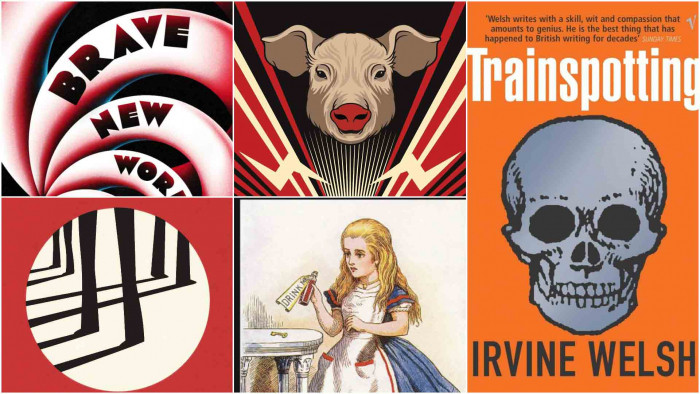
Writing the opening lines of a book is easy. Not that we’ve done it or anything. But just think of all the words that exist – you can choose any that you like. Just start bashing them out – words, words, words… And then you can go anywhere you like. Probably.
Writing the closing lines and/or paragraphs, however, now that’s hard. How to tie up your intricate web of intrigue? How to finish on a high?
Let’s leave it to the masters, eh? For your entertainment and intellectual wellbeing, 30 of the best closing lines in literature. Bang. The End.
The best book endings
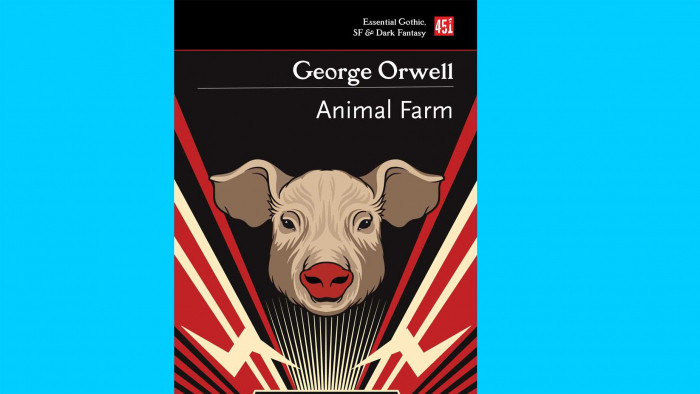
1 . Animal Farm (George Orwell)
The creatures outside looked from pig to man; and from man to pig; and from pig to man again; but already it was impossible to say which was which.
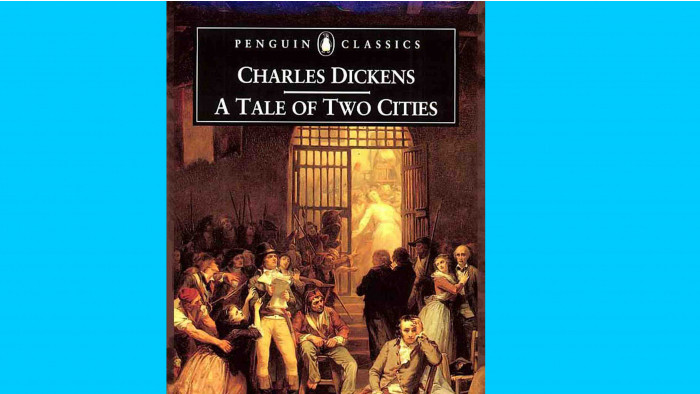
2 . A Tale Of Two Cities (Charles Dickens)
It is a far, far better thing that I do, than I have ever done; it is a far, far better rest than I go to than I have ever known.
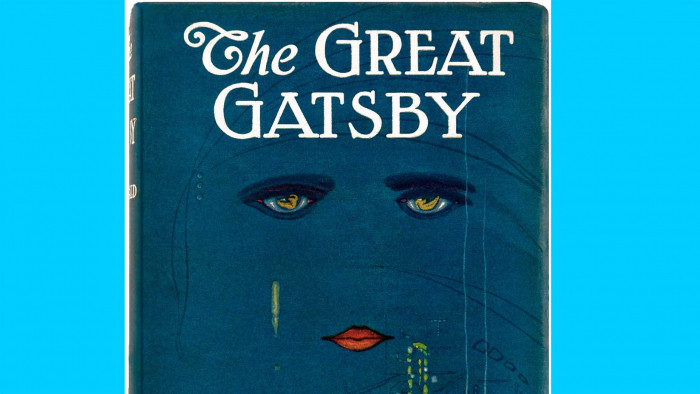
3 . The Great Gatsby (F Scott Fitzgerald )
So we beat on, boats against the current, borne back ceaselessly into the past.
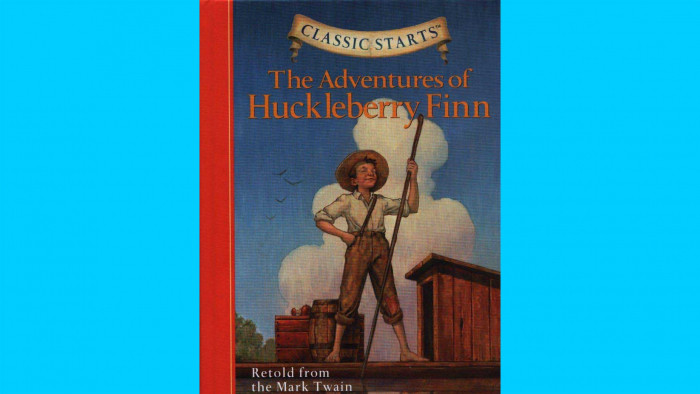
4 . The Adventures Of Huckleberry Finn (Mark Twain)
But I reckon I got to light out for the Territory ahead of the rest, because Aunt Sally she’s going to adopt me and sivilize me and I can’t stand it. I been there before.
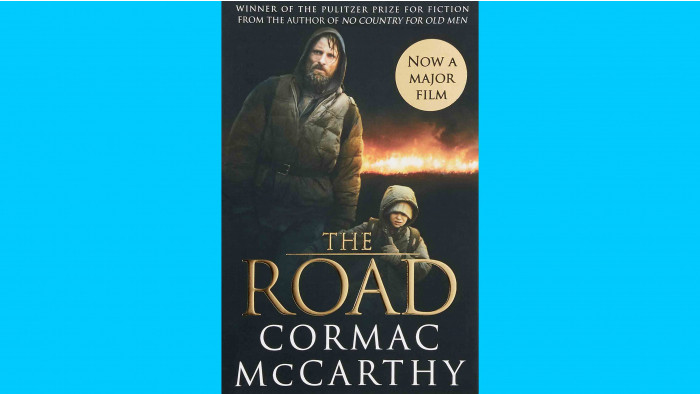
5 . The Road (Cormac McCarthy)
Once there were brook trout in the streams in the mountains. You could see them standing in the amber current where the white edges of their fins wimpled softly in the flow. They smelled of moss in your hand. Polished and muscular and torsional. On their backs were vermiculate patterns that were maps of the world in its becoming. Maps and mazes. Of a thing which could not be put back. Not be made right again. In the deep glens where they lived all things were older than man and they hummed of mystery.
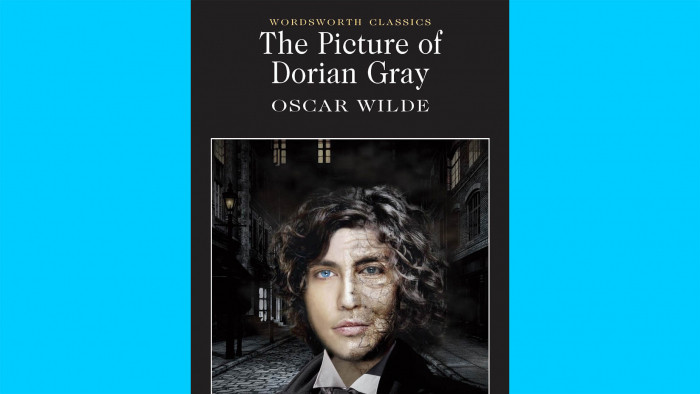
6 . Picture Of Dorian Gray (Oscar Wilde)
When they entered, they found hanging upon the wall a splendid portrait of their master as they had last seen him, in all the wonder of his exquisite youth and beauty. Lying on the floor was a dead man, in evening dress, with a knife in his heart. He was withered, wrinkled, and loathsome of visage. It was not till they had examined the rings that they recognized who it was.
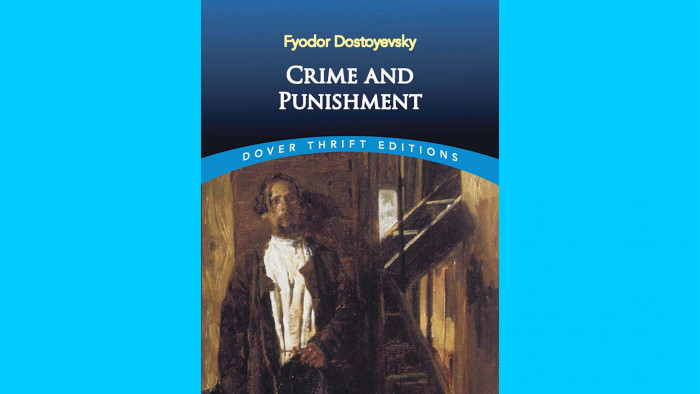
7 . Crime And Punishment (Dostoevsky)
But that is the beginning of a new story - the story of the gradual renewal of a man, the story of his gradual regeneration, of his passing from one world into another, of his initiation into a new unknown life. That might be the subject of a new story, but our present story is ended.
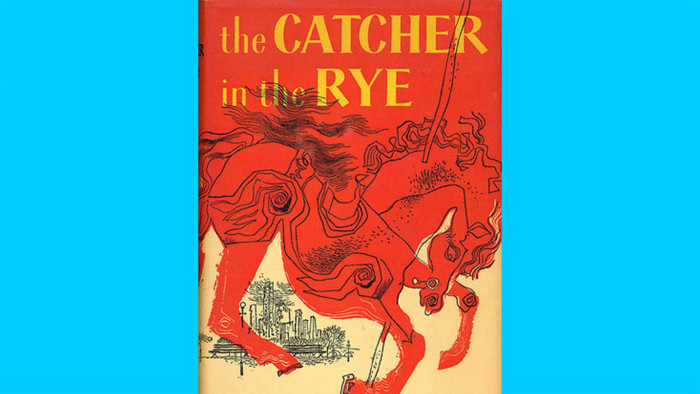
8 . Catcher In The Rye (JD Salinger)
Don’t ever tell anybody anything. If you do, you start missing everybody.
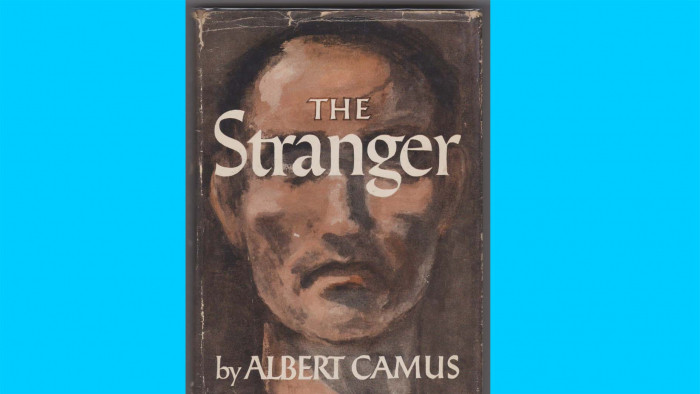
9 . The Stranger (Albert Camus)
And I too felt ready to live my life again. As if this great outburst of anger had purged all my ills, killed all my hopes, I looked up at the mass of signs and stars in the night sky and laid myself open for the first time to the benign indifference of the world. And finding it so much like myself, in fact so fraternal, I realised that I’d been happy, and that I was still happy. For the final consummation and for me to feel less lonely, my last wish was that there should be a crowd of spectators at my execution and that they should greet me with cries of hatred.
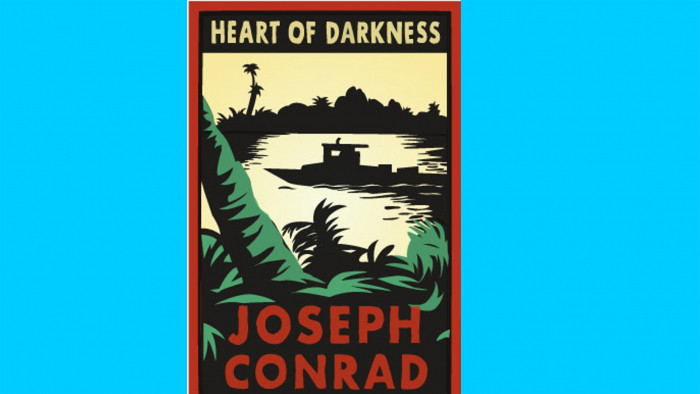
10 . Heart Of Darkness (Joseph Conrad)
The offing was barred by a black bank of clouds, and the tranquil waterway leading to the uttermost ends of the earth flowed sombre under an overcast sky – seemed to lead into the heart of an immense darkness.
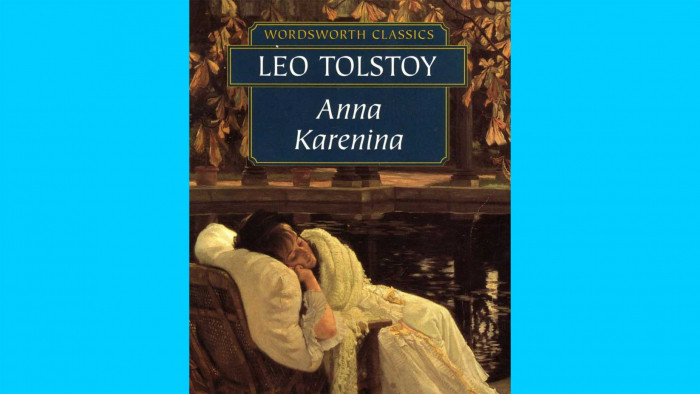
11 . Anna Karenina (Leo Tolstoy)
I shall go on in the same way, losing my temper with Ivan the coachman, falling into angry discussions, expressing my opinions tactlessly; there will be still the same wall between the holy of holies of my soul and other people, even my wife; I shall still go on scolding her for my own fright and being remorseful for it; I shall still be as unable to understand with my reason why I pray, and I shall still go on praying; but my life now, my whole life apart from anything that can happen to me, every minute of it is no more meaningless, as it was before, but it has the positive meaning of goodness, which I have the power to put into it.

12 . Wuthering Heights (Emily Brontë)
I lingered round them, under that benign sky; watched the moths fluttering among the heath, and hare-bells; listened to the soft wind breathing through the grass; and wondered how any one could ever imagine unquiet slumbers for the sleepers in that quiet earth.
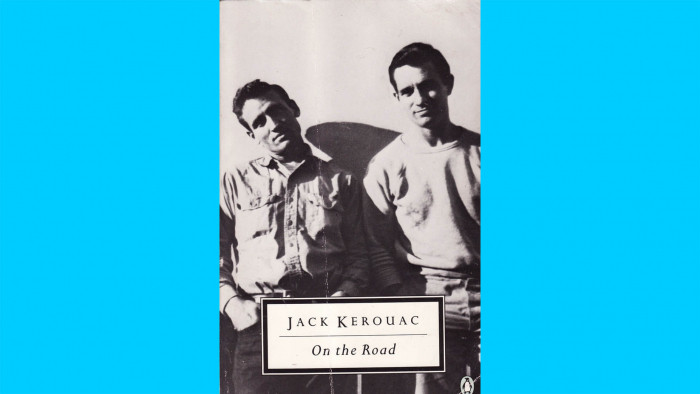
13 . On The Road (Jack Kerouac)
So in America when the sun goes down and I sit on the old broken-down river pier watching the long, long skies over New Jersey and sense all that raw land that rolls in one unbelievable huge bulge over to the West Coast, and all that road going, all the people dreaming in the immensity of it, and in Iowa I know by now the children must be crying in the land where they let the children cry, and tonight the stars'll be out, and don't you know that God is Pooh Bear? the evening star must be drooping and shedding her sparkler dims on the prairie, which is just before the coming of complete night that blesses the earth, darkens all rivers, cups the peaks and folds the final shore in, and nobody, nobody knows what's going to happen to anybody besides the forlorn rags of growing old, I think of Dean Moriarty, I even think of Old Dean Moriarty the father we never found, I think of Dean Moriarty.
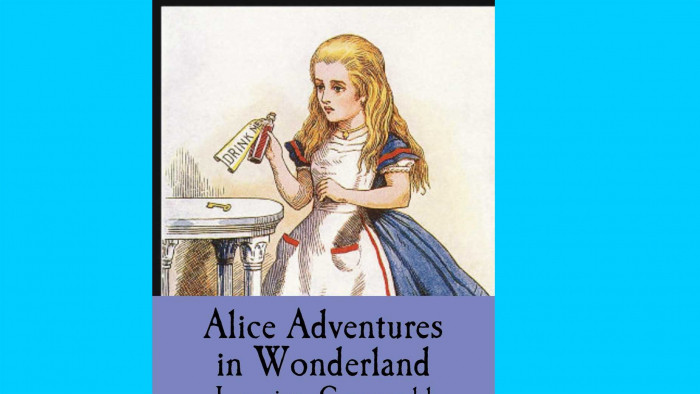
14 . Alice’s Adventures In Wonderland (Lewis Carroll)
Lastly, she pictured to herself how this same little sister of hers would, in the after-time, be herself a grown woman; and how she would keep, through all her riper years, the simple and loving heart of her childhood; and how she would gather about her other little children, and make their eyes bright and eager with many a strange tale, perhaps even with the dream of Wonderland of long ago; and how she would feel with all their simple sorrows, and find a pleasure in all their simple joys, remembering her own child-life, and the happy summer days.
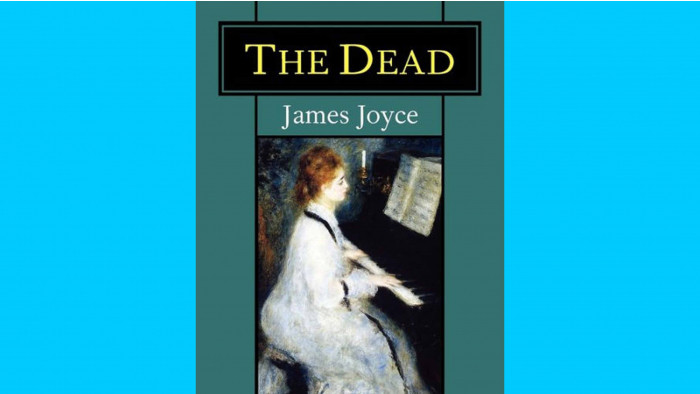
15 . The Dead (James Joyce)
A few light taps upon the pane made him turn to the window. It had begun to snow again. He watched sleepily the flakes, silver and dark, falling obliquely against the lamplight. The time had come for him to set out on his journey westward. Yes, the newspapers were right: snow was general all over Ireland. It was falling on every part of the dark central plain, on the treeless hills, falling softly upon the Bog of Allen and, farther westward, softly falling into the dark mutinous Shannon waves. It was falling, too, upon every part of the lonely churchyard on the hill where Michael Furey lay buried. It lay thickly drifted on the crooked crosses and headstones, on the spears of the little gate, on the barren thorns. His soul swooned slowly as he heard the snow falling faintly through the universe and faintly falling, like the descent of their last end, upon all the living and the dead.
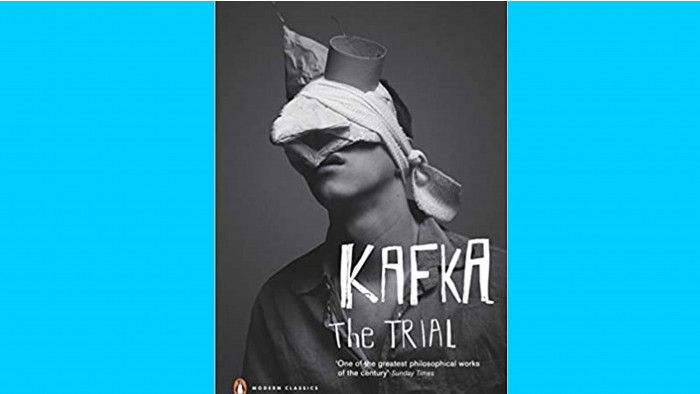
16 . The Trial (Franz Kafka)
But the hands of one of the gentleman were laid on K.’s throat, while the other pushed the knife deep into his heart and twisted it there, twice. As his eyesight failed, K. saw the two gentlemen cheek by cheek, close in front of his face, watching the result. “Like a dog!” he said, it was as if the shame of it should outlive him.
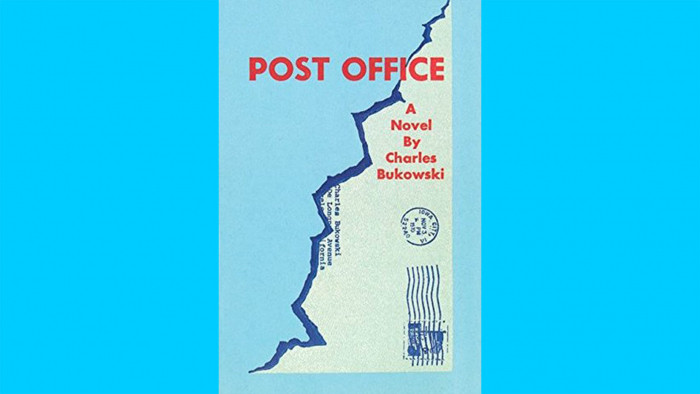
17 . Post Office (Charles Bukowski)
In the morning it was morning and I was still alive. Maybe I'll write a novel, I thought. And then I did.
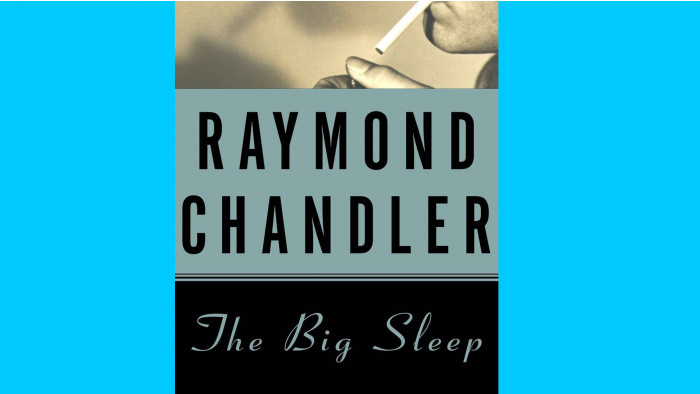
18 . The Big Sleep (Raymond Chandler)
What did it matter where you lay once you were dead? In a dirty sump or on a marble tower on top of a high hill? You were dead, you were sleeping the big sleep, you were not bothered by things like that. Oil and water were the same as wind and air to you. You just slept the big sleep, not caring about the nastiness of how you died or where you fell. Me, I was part of the nastiness now. Far more a part of it than Rusty Regan was. But the old man didn’t have to be. He could lie quiet on his canopied bed with his bloodless hands folded on the sheet waiting. His heart was a brief uncertain murmur. His thoughts were as gray as ashes. And in little while, he too, like Rusty Regan would be sleeping the big sleep. On the way downtown I stopped at a bar and had a couple of double Scotches. They didn’t do me any good. All they did was make me think of Silver-Wig and I never saw her again.
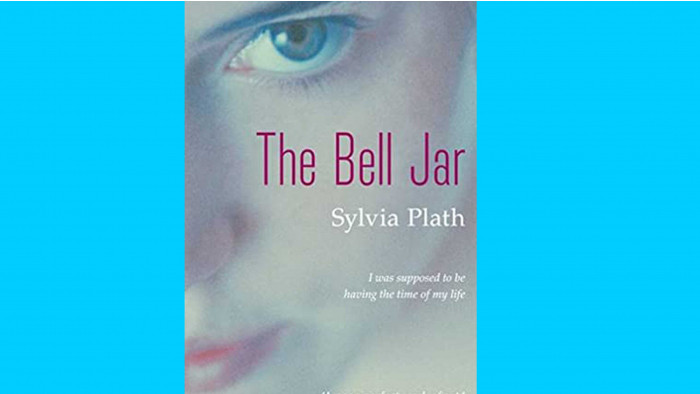
19 . The Bell Jar (Sylvia Plath)
The eyes and faces all turned themselves towards me, and guiding myself by them, as by a magical thread, I stepped into the room
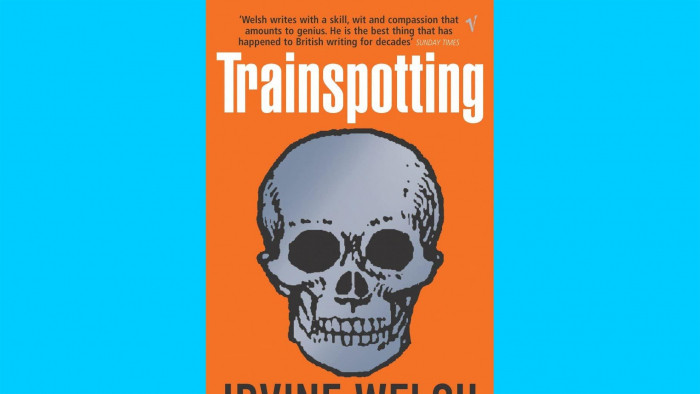
20 . Trainspotting (Irvine Welsh)
He had done what he had wanted to do. He could now never go back to Leith, to Edinburgh, even to Scotland, ever again. There, he could not be anything other than he was. Now, free from them all, for good, he could be what he wanted to be. He’d stand or fall alone. This thought both terrified and excited him as he contemplated life in Amsterdam.
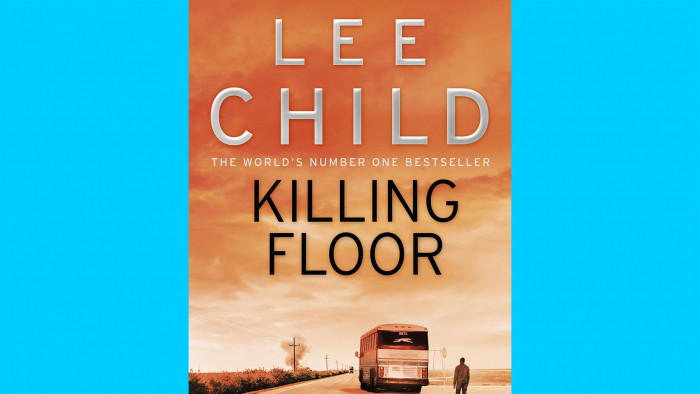
21 . Killing Floor (Lee Child)
I had tears in my eyes for more than a hundred miles. Then the old bus rattled over the state line. I looked out at the southeast corner of Alabama. Opened Roscoe's envelope. It was the photograph of Joe. She'd taken it from Molly Beth's valise. Taken it out of the frame. Trimmed it with scissors to fit my pocket. On the back she had written her telephone number. But I didn't need that. I had already committed it to memory.
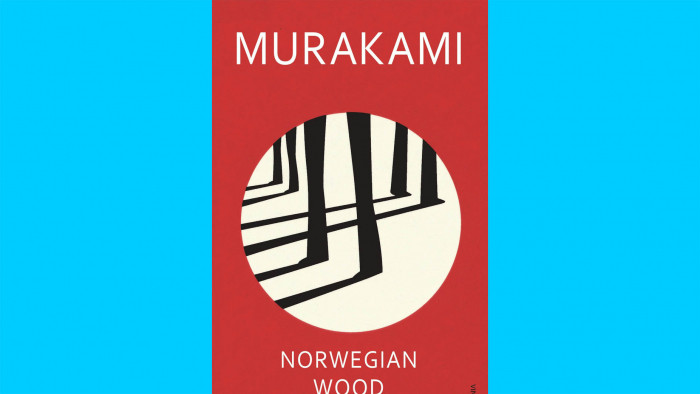
22 . Norwegian Wood (Haruki Murakami)
Gripping the receiver, I raised my head and turned to see what lay beyond the telephone booth. Where was I now? I had no idea. No idea at all. Where was this place? All that flashed into my eyes were the countless shapes of people walking by to nowhere. Again and again, I called out for Midori from the dead center of this place that was no place
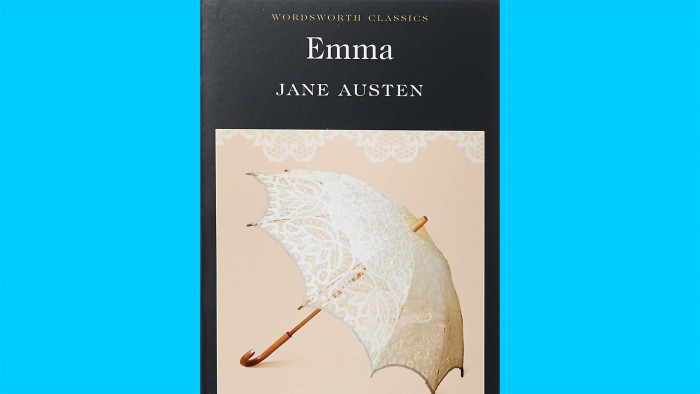
23 . Emma (Jane Austen)
But, in spite of these deficiencies, the wishes, the hopes, the confidence, the predictions of the small band of true friends who witnessed the ceremony, were fully answered in the perfect happiness of the union.
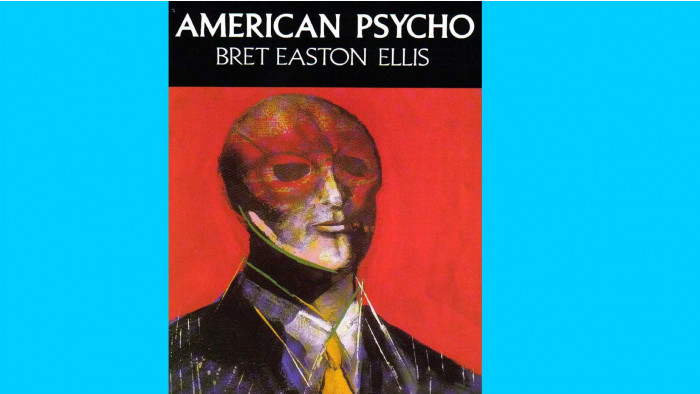
24 . American Psycho (Bret Easton Ellis)
Someone has already taken out a Minolta cellular phone and called for a car, and then, when I'm not really listening, watching instead someone who looks remarkably like Marcus Halberstam paying a check, someone asks, simply, not in relation to anything, "Why?" and though I'm very proud that I have cold blood and that I can keep my nerve and do what I'm supposed to do, I catch something, then realize it: Why? and automatically answering, out of the blue, for no reason, just opening my mouth, words coming out, summarizing for the idiots: "Welll, though I know I should have done that instead of not doing it, I'm twenty-seven for Christ sakes and this is, uh, how life presents itself in a bar or in a club in New York, maybe anywhere, at the end of the century and how people, you know, me, behave, and this is what being Patrick means to me, I guess, so well, yup, uh..." and this is followed by a sigh, then a slight shrug and another sigh, and above one of the doors covered by red velvet drapes in Harry's is a sign and on the sign in letters that match the drapes' color are the words THIS IS NOT AN EXIT.
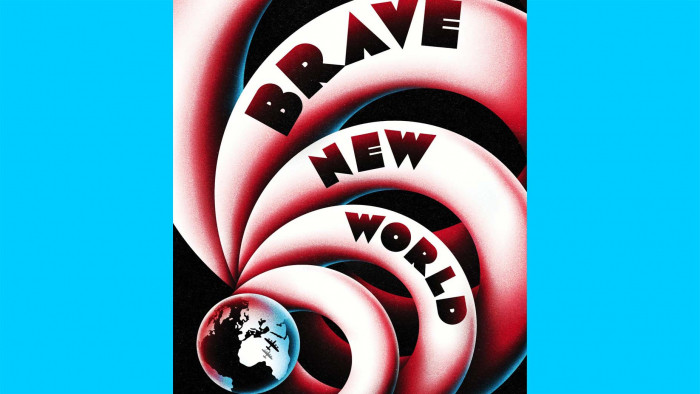
25 . Brave New World (Aldous Huxley)
Slowly, very slowly, like two unhurried compass needles, the feet turned towards the right; north, north-east, east, south-east, south, south-south-west; then paused, and, after a few seconds, turned as unhurriedly back towards the left. South-south-west, south, south-east, east
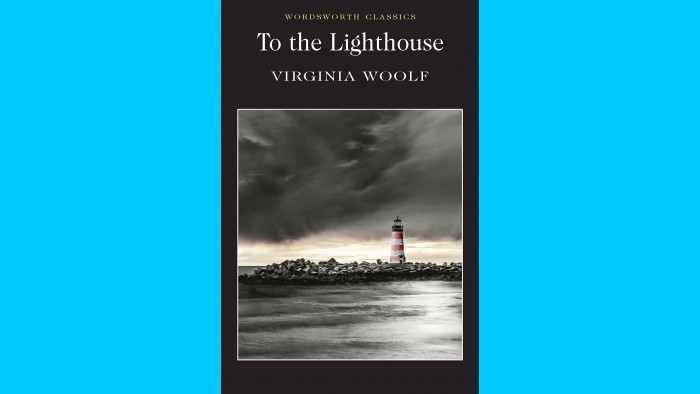
26 . To The Lighthouse (Virginia Woolf)
Yes, she thought, laying down her brush in extreme fatigue, I have had my vision.
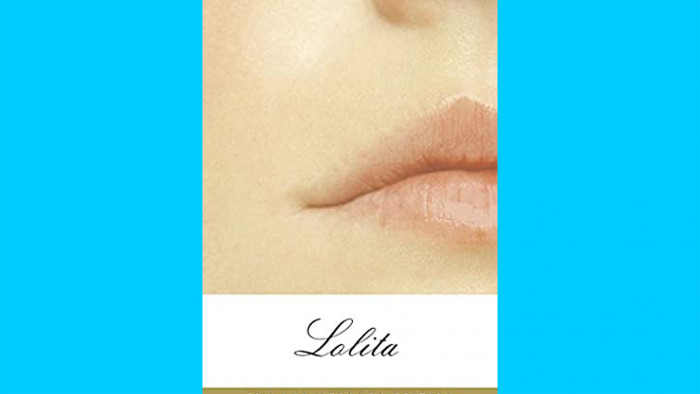
27 . Lolita (Vladimir Nabokov)
The following decision I make with all the legal impact and support of a signed testament: I wish this memoir to be published only when Lolita is no longer alive.
Thus, neither of us is alive when the reader opens this book. But while the blood still throbs through my writing hand, you are still as much part of blessed matter as I am, and I can still talk to you from here to Alaska. Be true to your Dick. Do not let other fellows touch you. Do not talk to strangers. I hope you will love your baby. I hope it will be a boy. That husband of yours, I hope, will always treat you well, because otherwise my specter shall come at him, like black smoke, like a demented giant, and pull him apart nerve by nerve. And do not pity C. Q. One had to choose between him and H.H., and one wanted H.H. to exist at least a couple of months longer, so as to have him make you live in the minds of later generations. I am thinking of aurochs and angels, the secret of durable pigments, prophetic sonnets, the refuge of art. And this is the only immortality you and I may share, my Lolita.
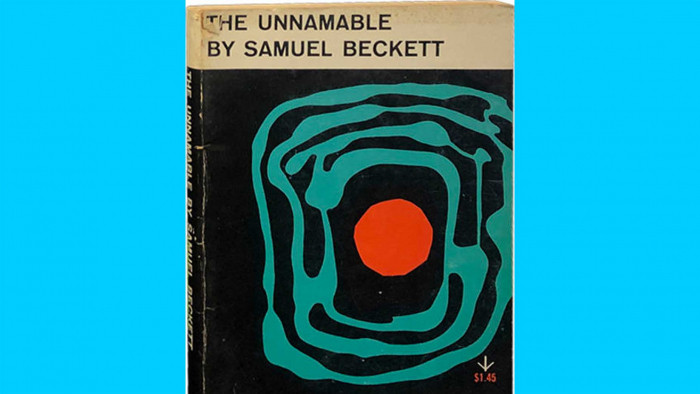
28 . The Unnamable (Samuel Beckett)
Perhaps it’s done already, perhaps they have said me already, perhaps they have carried me to the threshold of my story, before the door that opens on my story, that would surprise me, if it opens, it will be I, it will be the silence, where I am, I don’t know, I’ll never know, in the silence you don’t know, you must go on, I can’t go on, I’ll go on.
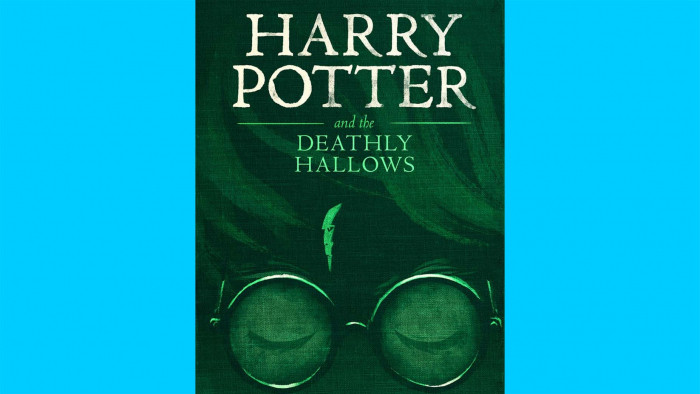
29 . Harry Potter And The Deathly Hallows (JK Rowling)
The scar had not pained Harry for nineteen years. All was well.
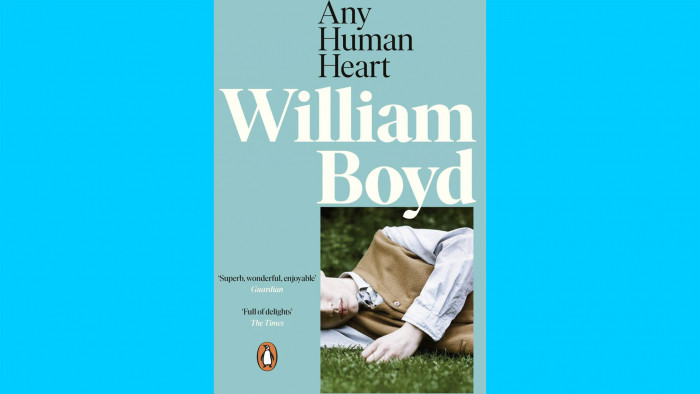
30 . Any Human Heart (William Boyd)
Life in the old dog. Life – still living, pleased to have managed to live in every decade of this long benighted century. What a time I’ve had – quel parcours, as the French say. I think a drink is called for. Yes, absolutely – I will open a chill bottle of white wine and take it out and sit under the big chestnut and drink a toast to Logan Mountstuart. Every decade. All my ups and downs. My personal rollercoaster. Not so much a rollercoaster - a rollercoaster's too smooth - a yo-yo rather - a jerking, spinning toy in the hands of a maladroit child, more like, trying too hard, too impatiently eager to learn how to operate his new yo-yo.
Now for the best opening lines in books .
SOMETHING MISSING FROM OUR SHORTLIST?
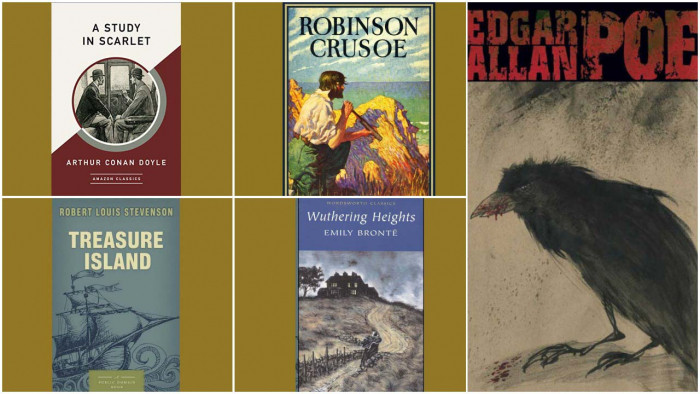
Best free books for Kindle: classics to read for free
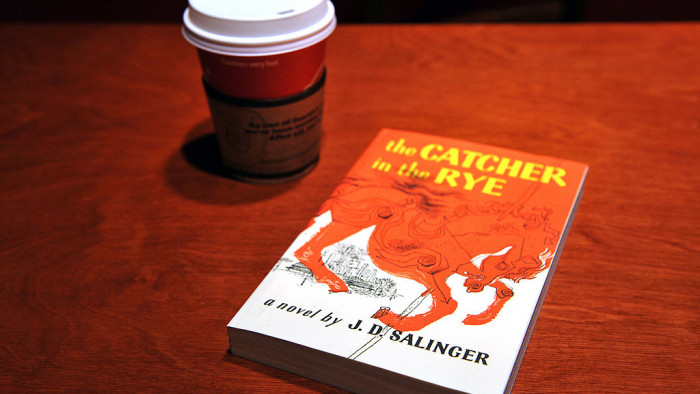
15 Things You Probably Don't Know About Catcher In The Rye

Banned books list: books so controversial they were banned
Related reviews and shortlists.
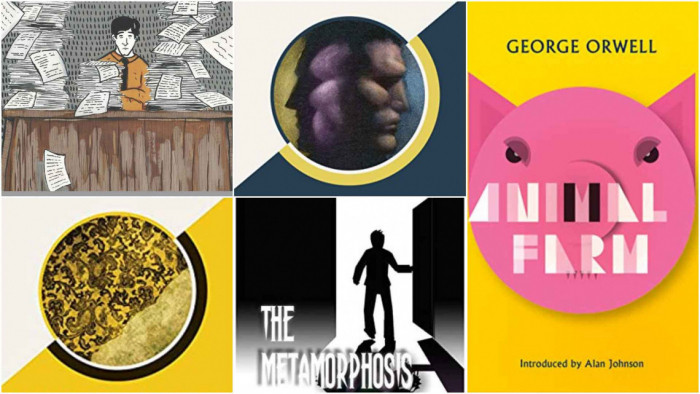
The best short books under 100 pages and quick to read

The best subscription boxes for the ultimate recurring gifts
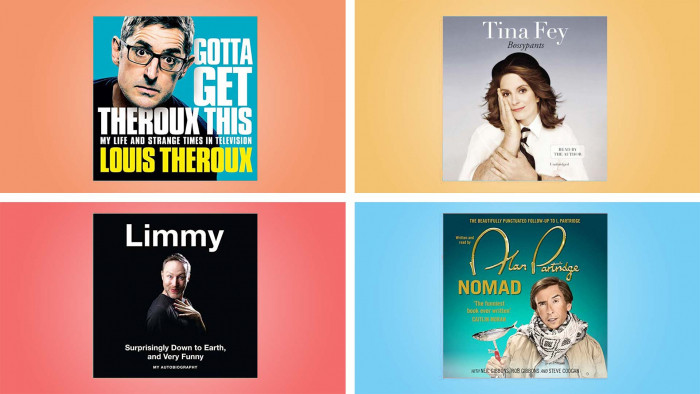
The best comedy audiobooks: fantastic funny stories to listen to
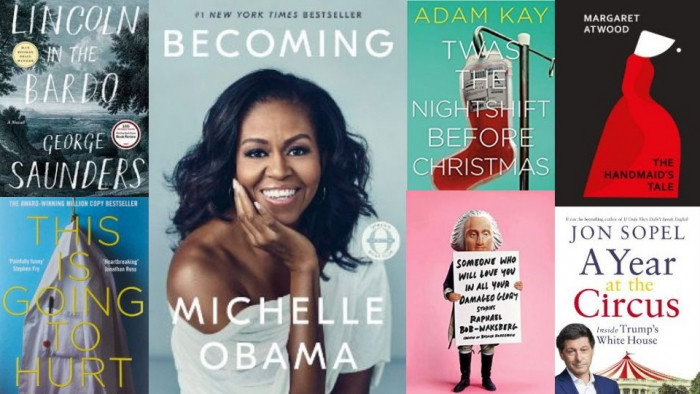
The best audiobooks in 2023: great reads to listen to today
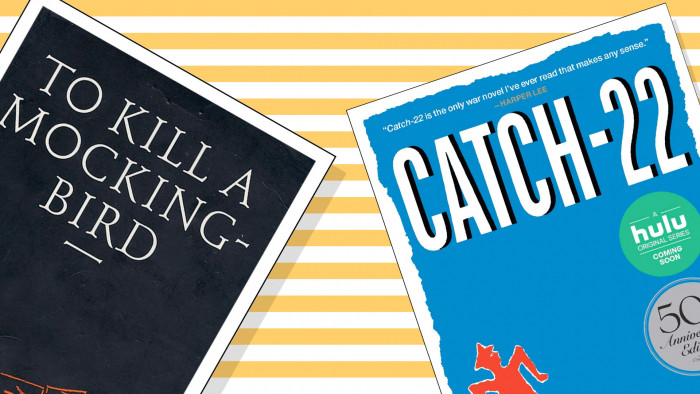
Classic books to read before you die: bucket list novels
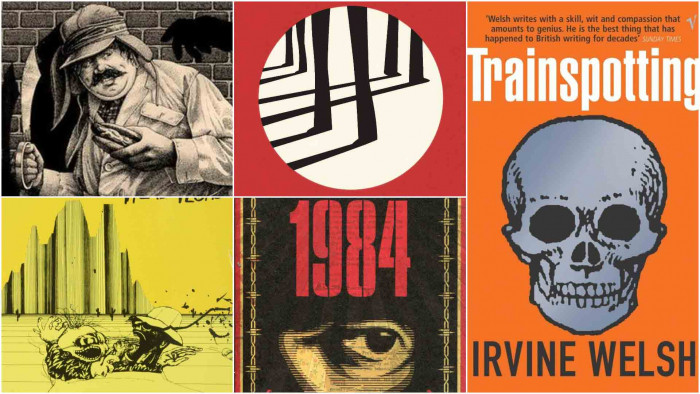
34 of literature's greatest opening paragraphs
Nicole Bianchi
Writing, Copywriting, & Marketing Strategies
How to Write a Memorable Conclusion: 5 Techniques of Famous Writers
Published November 5, 2019 | Last Updated April 10, 2024 By Nicole Bianchi 8 Comments

You’ve spent hours pouring your heart and soul into a blog post. You have an important message to share with your audience, and you’ve crafted a piece that you know will help them.
But now you’ve reached the conclusion, and you don’t know what to write. You fear that you’ve said all you have to say, and if you tack on more sentences to your piece, you’ll just be repeating yourself.
But you know you can’t skip the conclusion. If you’re writing a persuasive or inspirational piece, the conclusion is the last place you have to convince the reader of your opinion. A weak conclusion can diminish the effect of your entire piece of writing.
It’s like if you were enjoying a three-course meal at a fancy restaurant. The soup was creamy and delicious, the steak was perfectly cooked, but then the dessert arrived, and the pie tasted funny. That’s the taste that’s going to linger in your mouth after you finish the meal.
Just like the chef needs to wow you with the final course, you need to wow your readers with your conclusion. Otherwise, your piece will feel unfinished and be unsatisfying to your readers.
So how can you wow your readers?
In today’s blog post, let’s look at five different techniques famous writers have used to craft powerful conclusions that made their pieces memorable.
1. The Bonus Tip
This is a fantastic conclusion for blog posts, especially how-to’s or personal development articles.
It works like this: Let’s say you’ve shared in the body of your article a step-by-step process for accomplishing something. For example, you’re writing about how to master the basics of drawing in 30 days. But you save one final “bonus” tip for your conclusion.
It should be a tip that ties everything together. Usually, it’s best if it’s motivational or profound. For example, you might write in your conclusion about how none of the strategies will work unless the reader commits to practicing every day and doesn’t allow themselves to grow discouraged if their first drawings look terrible.
Neil Gaiman used this type of conclusion in his 2012 commencement speech at The University of the Arts. In his speech, he shared the six lessons he wished he knew when he was first starting out as a writer: how to follow your passion, how to deal with failure, etc.
Then, in his conclusion, he tied everything together with a final piece of advice that would help you implement all of the previous tips he’d shared:
Someone asked me recently how to do something she thought was going to be difficult, in this case recording an audio book, and I suggested she pretend that she was someone who could do it. Not pretend to do it, but pretend she was someone who could. She put up a notice to this effect on the studio wall, and she said it helped. So be wise, because the world needs more wisdom, and if you cannot be wise, pretend to be someone who is wise, and then just behave like they would. And now go, and make interesting mistakes, make amazing mistakes, make glorious and fantastic mistakes. Break rules. Leave the world more interesting for your being here. Make good art.
Notice that Gaiman makes his conclusion even more powerful by including several more lines after his “bonus tip” that call his hearers to action. Adding a call to action is an excellent way to make your conclusion more compelling if you’re writing an inspirational piece.
2. The Quote
This type of conclusion is quite simple. You include a quote either at the beginning of your conclusion or at the end.
Make sure your quote is not overly long and that it either sums up the main idea of your piece or it adds a final thought to ruminate over. It’s often best not to just tack on the quote to the end of your piece. Don’t write: “In conclusion, here’s a thought-provoking quote to end with…”
Instead, use the quote to back up your concluding thoughts. For example, Dr. Martin Luther King, Jr. uses a quote with heart-stirring effect in the conclusion of his famous “I Have A Dream” speech:
And when this happens, when we allow freedom to ring, when we let it ring from every village and hamlet, from every state and every city, we will be able to speed up that day when all of God’s children, black men and white men, Jews and Gentiles, Protestants and Catholics, will be able to join hands and sing in the words of the old Negro spiritual, ‘Free at last! Free at last! Thank God almighty, we’re free at last!’
3. The Zoom-In
This type of conclusion works well for personal essays. Essentially, you take a specific image or moment in time and zoom in on it, describing it in more detail. The image should encapsulate the main idea of your piece.
E. B. White uses this type of conclusion in his essay “Here is New York” . White takes a stroll through New York City and reflects on the city’s personality. He ends with the image of an old willow tree,
A block or two west of the new City of Man in Turtle Bay there is an old willow tree that presides over an interior garden. It is a battered tree, long suffering and much climbed, held together by strands of wire but beloved of those who know it. In a way it symbolizes the city: life under difficulties, growth against odds, sap-rise in the midst of concrete, and the steady reaching for the sun. Whenever I look at it nowadays, and feel the cold shadow of the planes, I think: ‘This must be saved, this particular thing, this very tree.’ If it were to go, all would go — this city, this mischievous and marvelous monument which not to look upon would be like death.
4. The Full Circle Story
In this article , I wrote about how a story can make for a captivating introduction. It can be a story about yourself or an anecdote that relates somehow to the theme of your piece.
Now here’s the cool part: If you open your piece with a story, you can bring it full circle by returning to it in your conclusion.
Usually, this is most effective if you left the story open-ended in your introduction. Your readers are waiting to find out what happens.
Or if you concluded the story in your introduction, you can revisit it from a different angle at the end of your piece.
You can also use the “full circle” technique with a story you shared later on in the body of your piece. For example, Virginia Woolf mentions Shakespeare’s sister in the body of her essay “A Room of One’s Own” .
In the conclusion, she brings this story full circle:
I told you in the course of this paper that Shakespeare had a sister; but do not look for her in Sir Sidney Lee’s life of the poet. She died young — alas, she never wrote a word…Now my belief is that this poet who never wrote a word and was buried at the crossroads still lives. She lives in you and in me, and in many other women who are not here tonight, for they are washing up the dishes and putting the children to bed…Drawing her life from the lives of the unknown who were her forerunners, as her brother did before her, she will be born. As for her coming without that preparation, without that effort on our part, without that determination that when she is born again she shall find it possible to live and write her poetry, that we cannot expect, for that would be impossible. But I maintain that she would come if we worked for her, and that so to work, even in poverty and obscurity, is worthwhile.
5. The Urgent Call to Action
Finally, as we have seen earlier, if you’re writing a persuasive or motivational piece, it is very effective to end with a “call to action” conclusion.
This type of conclusion emphasizes the urgency of solving the problem. What happens if your readers don’t take action? What will happen if they do?
One of the most famous calls to action appears at the end of Patrick Henry’s “Give Me Liberty Or Give Me Death” speech:
It is in vain, sir, to extenuate the matter. Gentlemen may cry, Peace, Peace but there is no peace. The war is actually begun! The next gale that sweeps from the north will bring to our ears the clash of resounding arms! Our brethren are already in the field! Why stand we here idle? What is it that gentlemen wish? What would they have? Is life so dear, or peace so sweet, as to be purchased at the price of chains and slavery? Forbid it, Almighty God! I know not what course others may take; but as for me, give me liberty or give me death!
The Takeaway
These five techniques are only a small selection of the many different ways you can end a piece of writing.
You can even combine several of these techniques together to make them more powerful. For example, a conclusion could open with a quote, then share a bonus tip, and end on a call to action.
No matter how you decide to conclude your piece, make sure you’re not just summarizing or repeating what you’ve already said in the previous paragraphs.
Dig deeper than you have in the body of your piece. Take your arguments to their most profound extent. Leave your readers with a final thought to chew on.
In his book Storycraft (Amazon affiliate link) , editor Jack Hart observes,
Resolution is the ultimate aim of every story… It contains the lesson that the audience carries away, the insight that the story’s readers or viewers or listeners can apply to their own lives.
Zero in on that one lesson, that one big idea, you want your readers to take away. This will make your conclusion and, thus, your entire piece memorable, just like the last satisfying bite of a delicious meal.
If you enjoyed this post, leave a comment below and please share it with a friend who you think might find it helpful too. Thanks for reading!
Did you enjoy this post? Get the free eBook!
Join the mailing list, and as a special welcome gift, I'll send you a free copy of my eBook "Famous Writers' Productivity Hacks". You will also get my latest posts about how to hone your craft (+ more writing inspiration not shared on the blog) delivered straight to your inbox.
A confirmation email is on its way!
Your data is collected, used, and protected according to the Privacy Policy . Unsubscribe at any time.
Keep Reading: Top Posts
Chinonso Amechi says
April 25, 2022 at 11:34 am
Hi Nicole. It was helpful and educative reading through your content. Thanks for sharing. I may as well love to get in touch. Thanks.
Eric Bullock says
April 14, 2020 at 7:59 pm
The guide is clear and bright, without any added useless facts or else.
The language is equally brilliant and colorful, so the longer I read, the more I do like it!
Shweta says
January 16, 2020 at 1:52 am
Thank you Nichole. This article is helpful. I navigated to your site through Medium.
Thomas Sparley says
November 19, 2019 at 7:12 am
Nicole, I have been writing technical reports for proposals, assessments and project completions for 30 years. The last 7 years I have wrote my daily journal after life-safing surgeries gave me another chance to create. Reading your helpful tips on writing has given me a clear perspective of how I can be more expressive and creative.
yamini says
November 11, 2019 at 3:49 am
thank you. that was very helpful
Nicole Bianchi says
November 12, 2019 at 3:08 pm
You’re welcome, Yamini. 🙂 I’m glad you found it helpful!
Kristina says
November 10, 2019 at 11:18 pm
Nicole – just want to say thanks for all you do. I love your work, and am grateful to be part of the FB group. I enjoy your writing, and got a lot out of the SC Gwynne Outlining piece. Many, many thanks!
November 12, 2019 at 3:09 pm
Thanks so much, Kristina! That’s so kind of you, and I am happy to hear you enjoyed the SC GWynne piece. I wish you much success with your writing! 🙂
Leave a Reply Cancel reply
Your email address will not be published. Required fields are marked *
This site uses Akismet to reduce spam. Learn how your comment data is processed .

Get notified in your email when a new post is published to this blog
The Old New Thing

The origin story of the Windows 3D Pipes screen saver
How do I get the name of a SID, and what does it mean when the conversion fails?
What’s the deal with std::type_identity , can ini files be unicode yes, they can, but it has to be your idea, how 16-bit windows cached ini files for performance, why does globallock max out at 255 locks, more on harmful overuse of std:: move, a graphical depiction of the steps in building a c++ executable, with xaml and packaging, a graphical depiction of the steps in building a c++ executable, enhanced for classic win32, a graphical depiction of the steps in building a c++ executable, basics.

Diversity wins: How inclusion matters
Diversity wins is the third report in a McKinsey series investigating the business case for diversity, following Why diversity matters (2015) and Delivering through diversity (2018). Our latest report shows not only that the business case remains robust but also that the relationship between diversity on executive teams and the likelihood of financial outperformance has strengthened over time. These findings emerge from our largest data set so far, encompassing 15 countries and more than 1,000 large companies. By incorporating a “social listening” analysis of employee sentiment in online reviews, the report also provides new insights into how inclusion matters. It shows that companies should pay much greater attention to inclusion, even when they are relatively diverse.
In the COVID-19 crisis, inclusion and diversity matter more than ever
For business executives the world over, the COVID-19 pandemic is proving to be one of the greatest leadership tests of their careers. Not only must they protect the health of their employees and customers, they must also navigate far-reaching disruption to their operations, plan for recovery, and prepare to reimagine their business models for the next normal.
In this challenging context, the task of fostering inclusion and diversity (I&D) could easily take a back seat—and the painstaking progress made by many firms in recent years could be reversed. As this report shows, however, I&D is a powerful enabler of business performance. Companies whose leaders welcome diverse talents and include multiple perspectives are likely to emerge from the crisis stronger. As the CEO of a European consumer-goods company told us: “I know we have to deal with COVID-19, but inclusion and diversity is a topic too important to put onto the back burner.”
On the other hand, some companies appear to be viewing I&D as a “luxury we cannot afford” during the crisis. We believe such companies risk tarnishing their license to operate in the long term and will lose out on opportunities to innovate their business models and strengthen their recovery.
If companies deprioritize I&D during the crisis, the impact will be felt not just on the bottom line but in people’s lives. Research and experience warn that diverse talent can be at risk during a downturn for several reasons—for example, downsizing can have a disproportionate impact on the roles typically held by diverse talent. As companies send staff home to work, this could reinforce existing exclusive behaviors and unconscious biases and undermine inclusion. In addition, inequality with regard to sharing childcare and homeschooling responsibilities, as well as the quality of home workspace (including broadband access), could put women and minorities at a disadvantage during this time of working remotely.
Companies need to seize this moment—both to protect the gains they have already made and to leverage I&D to position themselves to prosper in the future.
There is ample evidence that diverse and inclusive companies are more likely to make better, bolder decisions—a critical capability in the crisis. For example, diverse teams have been shown to be better able to radically innovate and anticipate shifts in consumer needs and consumption patterns. Moreover, the shift to technology-enabled remote working presents an opportunity for companies to accelerate building inclusive and agile cultures—further challenging existing management routines. Not least, a visible commitment to I&D during the crisis is likely to strengthen companies’ global image and license to operate.
By following the trajectories of hundreds of companies in our data set since 2014, we find that the overall slow growth in diversity often observed in fact masks a growing polarization among these organizations. While most have made little progress, are stalled or even slipping backward, some are making impressive gains in diversity, particularly in executive teams. We show that these diversity winners are adopting systematic, business-led approaches to inclusion and diversity (I&D) . And, with a special focus on inclusion, we highlight the areas where companies should take far bolder action to create a long-lasting inclusive culture and to promote inclusive behavior.
(Our research predates the outbreak of the global pandemic, but we believe these findings remain highly relevant. See the sidebar, “In the COVID-19 crisis, inclusion and diversity matter more than ever,” for more on why I&D must remain a priority even as the context shifts, or read “ Diversity still matters ” for an even deeper dive. You can also explore a related interactive for another lens on the issues.)
A stronger business case for diversity, but slow progress overall
Our latest analysis reaffirms the strong business case for both gender diversity and ethnic and cultural diversity in corporate leadership—and shows that this business case continues to strengthen. The most diverse companies are now more likely than ever to outperform less diverse peers on profitability.
Our 2019 analysis finds that companies in the top quartile for gender diversity on executive teams were 25 percent more likely to have above-average profitability than companies in the fourth quartile—up from 21 percent in 2017 and 15 percent in 2014 (Exhibit 1).
Moreover, we found that the greater the representation, the higher the likelihood of outperformance. Companies with more than 30 percent women executives were more likely to outperform companies where this percentage ranged from 10 to 30, and in turn these companies were more likely to outperform those with even fewer women executives, or none at all. A substantial differential likelihood of outperformance—48 percent—separates the most from the least gender-diverse companies.
In the case of ethnic and cultural diversity, our business-case findings are equally compelling: in 2019, top-quartile companies outperformed those in the fourth one by 36 percent in profitability, slightly up from 33 percent in 2017 and 35 percent in 2014. As we have previously found, the likelihood of outperformance continues to be higher for diversity in ethnicity than for gender.

A McKinsey Live event on 'Creating an inclusive environment for transgender employees'
.jpg?cq=50&mh=145&car=16:9&cpy=Center)
A McKinsey Live event on 'Women in the Workplace 2021: The state of women hangs in the balance'
Yet progress, overall, has been slow. In the companies in our original 2014 data set, based in the United States and the United Kingdom, female representation on executive teams rose from 15 percent in 2014 to 20 percent in 2019. Across our global data set, for which our data starts in 2017, gender diversity moved up just one percentage point—to 15 percent, from 14—in 2019. More than a third of the companies in our data set still have no women at all on their executive teams. This lack of material progress is evident across all industries and in most countries. Similarly, the representation of ethnic-minorities on UK and US executive teams stood at only 13 percent in 2019, up from just 7 percent in 2014. For our global data set, this proportion was 14 percent in 2019, up from 12 percent in 2017 (Exhibit 2).
The widening gap between winners and laggards
While overall progress on gender and cultural representation has been slow, this is not consistent across all organizations. Our research clearly shows that there is a widening gap between I&D leaders and companies that have yet to embrace diversity. A third of the companies we analyzed have achieved real gains in top-team diversity over the five-year period. But most have made little or no progress, and some have even gone backward.
This growing polarization between high and low performers is reflected in an increased likelihood of a performance penalty. In 2019, fourth-quartile companies for gender diversity on executive teams were 19 percent more likely than companies in the other three quartiles to underperform on profitability—up from 15 percent in 2017 and 9 percent in 2015. At companies in the fourth quartile for both gender and ethnic diversity, the penalty was even steeper in 2019: they were 27 percent more likely to underperform on profitability than all other companies in our data set.
Learn more about delivering through diversity
We sought to understand how companies in our original 2014 data set have been progressing, and in doing so we identified five cohorts. These were based on their starting points and speed of progress on executive team gender representation and, separately, ethnic-minority representation (Exhibit 3). In the first two cohorts, Diversity Leaders and Fast Movers, diverse representation improved strongly over the past five years: for example, gender Fast Movers have almost quadrupled the representation of women on executive teams, to 27 percent, in 2019; for ethnicity, companies in the equivalent cohort have increased their level of diversity from just 1 percent in 2014 to 18 percent in 2019.
At the other end of the spectrum, the already poor diversity performance of the Laggards has declined further. In 2019, an average of 8 percent of executive team members at these companies were female—and they had no ethnic-minority representation at all. The two other cohorts are Moderate Movers, which have on average experienced a slower improvement in diversity, and Resting on Laurels, which started with higher levels of diversity than Laggards did, but have similarly become less diverse since 2014.
We also found that the average likelihood of financial outperformance in these cohorts is consistent with our findings in the quartile analysis above. For example, in 2019, companies in the Resting on Laurels cohort on average had the highest likelihood of outperformance on profitability, at almost 62 percent—likely reflecting their historically high levels of diversity on executive teams. Laggards, on the other hand, are more likely to underperform their national industry median in profitability, at 40 percent.
How inclusion matters
By analyzing surveys and company research, we explored how different approaches to I&D could have shaped the trajectories of the companies in our data set. Our work suggested two critical factors: a systematic business-led approach to I&D, and bold action on inclusion. On the former we have previously advocated for an I&D approach based on a robust business case tailored to the needs of individual companies, evidenced-based targets, and core-business leadership accountability.
To further understand how inclusion matters—and which aspects of it employees regard as significant—we conducted our first analysis of inclusion-related indicators. We conducted this outside-in using “social listening,” focusing on sentiment in employee reviews of their employers posted on US-based online platforms.
While this approach is indicative, rather than conclusive, it could provide a more candid read on inclusion than internal employee-satisfaction surveys do—and makes it possible to analyze data across dozens of companies rapidly and simultaneously. We focused on three industries with the highest levels of executive-team diversity in our data set: financial services , technology , and healthcare . In these sectors, comments directly pertaining to I&D accounted for around one-third of total comments made, suggesting that this topic is high on employees’ minds.
We analyzed comments relating to five indicators. The first two—diverse representation and leadership accountability for I&D—are evidence of a systematic approach to I&D. The other three—equality, openness, and belonging—are core components of inclusion. For several of these indicators, our findings suggest “pain points” in the experience of employees:
- While overall sentiment on diversity was 52 percent positive and 31 percent negative, sentiment on inclusion was markedly worse, at only 29 percent positive and 61 percent negative. This encapsulates the challenge that even the more diverse companies still face in tackling inclusion (Exhibit 4). Hiring diverse talent isn’t enough—it’s the workplace experience that shapes whether people remain and thrive.
- Opinions about leadership and accountability in I&D accounted for the highest number of mentions and were strongly negative. On average, across industries, 51 percent of the total mentions related to leadership, and 56 percent of those were negative. This finding underscores the increasingly recognized need for companies to improve their I&D engagement with core-business managers.
- For the three indicators of inclusion—equality, openness, and belonging—we found particularly high levels of negative sentiment about equality and fairness of opportunity. Negative sentiment about equality ranged from 63 to 80 percent across the industries analyzed. The work environment’s openness, which encompasses bias and discrimination, was also a significant concern—negative sentiment across industries ranged from 38 to 56 percent. Belonging elicited overall positive sentiment, but from a relatively small number of mentions.
These findings highlight the importance not just of inclusion overall but also of specific aspects of inclusion. Even relatively diverse companies face significant challenges in creating work environments characterized by inclusive leadership and accountability among managers, equality and fairness of opportunity, and openness and freedom from bias and discrimination.
Winning through inclusion and diversity: Taking bold action
We took a close look at our data set’s more diverse companies, which as we have seen are more likely to outperform financially. The common thread for these diversity leaders is a systematic approach and bold steps to strengthen inclusion. Drawing on best practices from these companies, this report highlights five areas of action (Exhibit 5):
- Ensure the representation of diverse talent. This is still an essential driver of inclusion. Companies should focus on advancing diverse talent into executive, management, technical, and board roles. They should ensure that a robust I&D business case designed for individual companies is well accepted and think seriously about which forms of multivariate diversity to prioritize (for example, going beyond gender and ethnicity). They also need to set the right data-driven targets for the representation of diverse talent.
- Strengthen leadership accountability and capabilities for I&D. Companies should place their core-business leaders and managers at the heart of the I&D effort—beyond the HR function or employee resource-group leaders. In addition, they should not only strengthen the inclusive-leadership capabilities of their managers and executives but also more emphatically hold all leaders to account for progress on I&D.
- Enable equality of opportunity through fairness and transparency. To advance toward a true meritocracy, it is critical that companies ensure a level playing field in advancement and opportunity. They should deploy analytics tools to show that promotions, pay processes, and the criteria behind them, are transparent and fair; debias these processes ; and strive to meet diversity targets in their long-term workforce plans.
- Promote openness and tackle microaggressions. Companies should uphold a zero-tolerance policy for discriminatory behavior, such as bullying and harassment, and actively help managers and staff to identify and address microaggressions. They should also establish norms for open, welcoming behavior and ask leaders and employees to assess each other on how they are living up to that standard.
- Foster belonging through unequivocal support for multivariate diversity. Companies should build a culture where all employees feel they can bring their whole selves to work. Managers should communicate and visibly embrace their commitment to multivariate forms of diversity, building a connection to a wide range of people and supporting employee resource groups to foster a sense of community and belonging. Companies should explicitly assess belonging in internal surveys.
For deeper insights, download Diversity wins: How inclusion matters , the full report on which this article is based (PDF–10.6MB).

Explore a career with us
Related articles.

Diversity still matters

IMAGES
VIDEO
COMMENTS
There are five main steps to writing a good conclusion. Let's go through each step. 1. Understand the Purpose. The conclusion is your final opportunity to leave an impact. It should tie together your main ideas, reinforce your message, and give the reader a sense of closure. Wrap Up Your Main Ideas.
Essay Conclusion Examples. Below is a range of copy-and-paste essay conclusions with gaps for you to fill-in your topic and key arguments. Browse through for one you like (there are 17 for argumentative, expository, compare and contrast, and critical essays). Once you've found one you like, copy it and add-in the key points to make it your ...
Expository Essay Conclusion Examples Topic #5: Explain how to write an essay conclusion. Essay conclusions are pretty simple once you know the framework. It all boils down to three main parts: a transition from the last body paragraph, a summary of the thesis statement and main points of the essay, and a closing statement that wraps everything up.
Finally, some advice on how not to end an essay: Don't simply summarize your essay. A brief summary of your argument may be useful, especially if your essay is long--more than ten pages or so. But shorter essays tend not to require a restatement of your main ideas. Avoid phrases like "in conclusion," "to conclude," "in summary," and "to sum up ...
The conclusion is a very important part of your essay. Although it is sometimes treated as a roundup of all of the bits that didn't fit into the paper earlier, it deserves better treatment than that! It's the last thing the reader will see, so it tends to stick in the reader's memory. It's also a great place to remind the reader exactly why ...
It deserves all the careful attention the introduction enjoys. A strong conclusion should: summarize all the main points of the essay and tie them in with the thesis statement. highlight the most ...
Step 1: Return to your thesis. To begin your conclusion, signal that the essay is coming to an end by returning to your overall argument. Don't just repeat your thesis statement —instead, try to rephrase your argument in a way that shows how it has been developed since the introduction. Example: Returning to the thesis.
How to Write a Conclusion. To write a strong conclusion, there are several "do's" you'll want to keep in mind. Image by Jan Vašek from Pixabay. 1. Synthesize your main points. While your summary should neatly wrap up your paper and tie up any loose ends, you should note the difference between summarizing and synthesizing your main points.
The conclusion pushes beyond the boundaries of the prompt and allows you to consider broader issues, make new connections, and elaborate on the significance of your findings. Your conclusion should make your readers glad they read your paper. Your conclusion gives your reader something to take away that will help them see things differently or ...
Strong conclusion examples pave the way for the perfect paper ending. See how to write a good conclusion for a project, essay or paper to get the grade.
Most conclusion paragraphs are four to five sentences long and should average between 50-75 words. They should be long enough to get your point across, but short enough that you're not rehashing every idea you've ever had on the subject. Conclusion paragraphs begin by revisiting the main idea definition.
1. The Starter. This sentence begins the conclusion by restating or rephrasing the thesis of the essay, albeit with a deeper understanding. 2. The Summary. The starter is followed by 2 or 3 sentences that wrap up the main arguments of the essay and show how they connect to support the central thesis. 3.
Also read: How to Write a Thesis Statement. 2. Tying together the main points. Tying together all the main points of your essay does not mean simply summarizing them in an arbitrary manner. The key is to link each of your main essay points in a coherent structure. One point should follow the other in a logical format.
When wondering how to write a conclusion, it boils down to this: Conclusions should round off the topic and leave a strong impression in the readers' minds. We show you three key elements to a memorable conclusion. ... written the best introduction and body paragraphs known to humankind, and you're ready to leave it at that. Except every good ...
End your essay with a call to action, warning, or image to make your argument meaningful. Keep your conclusion concise and to the point, so you don't lose a reader's attention. Do your best to avoid adding new information to your conclusion and only emphasize points you've already made in your essay. Method 1.
The conclusion is a very important part of your essay. Although it is sometimes treated as a roundup of all of the bits that didn't fit into the paper earlier, it deserves better treatment than that! It's the last thing the reader will see, so it tends to stick in the reader's memory. It's also a great place to remind the reader exactly why ...
How to write a Conclusion: The Five-C Conclusion Method. 1 Close the loop. Return to a statement you made in the introduction. 2 Conclude. Show what your final position is. 3 Clarify. Clarify how your final position is relevant to the Essay Question. 4 Concern. Explain who should be concerned by your findings.
The conclusion to an essay is the most purely rhetorical part of the entire piece. By "rhetorical", we mean a conclusion's (and indeed the entire essay's) ability to convince or persuade the reader of certain outlooks or arguments. An essay conclusion needs to use rhetoric to emotionally connect with the reader in some way. And this is ...
Here are a few tips to effectively restate your thesis. Show Complexity: If your essay added layers or nuances to the original statement, be sure to articulate that clearly. Integrate Key Findings: Incorporate the main findings of your essay to reinforce how they supported or refined your thesis.
The best book endings. 1. Animal Farm (George Orwell) Buy now from Amazon. The creatures outside looked from pig to man; and from man to pig; and from pig to man again; but already it was impossible to say which was which. 188. 23.
If you're looking for good conclusion starters to finish your piece strongly, look no further. Find examples of great ways to begin your conclusion here.
In today's blog post, let's look at five different techniques famous writers have used to craft powerful conclusions that made their pieces memorable. 1. The Bonus Tip. This is a fantastic conclusion for blog posts, especially how-to's or personal development articles. It works like this: Let's say you've shared in the body of your ...
A graphical depiction of the steps in building a C++ executable, enhanced for classic Win32. May 30, 2024. Raymond Chen. Adding in Microsoft-specific tools. 1 0. Code.
For deeper insights, download Diversity wins: How inclusion matters, the full report on which this article is based (PDF-10.6MB). Although the business case for diversity, equity, and inclusion (DE&I) is stronger than ever, many companies' progress has stalled. A systematic approach and bold action can help.